Strength in community
COLUMN: The tragedy in East Lansing changed my perception of home
By Patrick Sloan-Turner Online Managing EditorIt’s difficult to put into words how much it hurts to have this happen at the place you call home.
Like presumably many others, when I hear of a mass shooting, it doesn’t affect me the same way it did 10 years ago. I’m numb to it. I shake my head and follow the coverage, but a day later, I’ve moved on. That’s not a good thing, but I think it’s a reality for so many of us now.
This past week was different. Like columnist Graham Couch at the Lansing State Journal said this week, it was our turn.
East Lansing, Michigan is my home. I was raised on the banks of the Red Cedar. My earliest memory is the bright green Astroturf that used to cover the field at
Spartan Stadium.
East Lansing and Michigan State University are in my DNA.
It’s where I learned to drive a car. It’s where I had my first drink. It’s where I met strangers that I now call brothers.
I first heard what was happening when my best friend, Chris, texted me around dinner time last Monday. I turned on the TV to see reports of a shooter at the MSU Union and Berkey Hall, buildings I know like rooms of my childhood home. Though a little shocked at first, I was still numb to it, like I always am.
Then, I saw the videos on social media of students running through the campus streets, shots of hundreds of police officers, FBI agents and tactical teams, and a sheet-covered body on a stretcher that was maybe 15-yards from where I had a first kiss with a girlfriend
years ago.
In an instant, the numbness was gone.
Safety and security can mean a lot of things, but I think they’re often synonymous with “home.” Over the past week, I’ve spent plenty of time thinking about what East Lansing means to me. The reason this one has shaken me like it has is because it happened at what I see as the safest place in the world: my home.
Those who leave home know the feeling of returning to your old stomping grounds. It’s a feeling of warm familiarity.
I’m in Chicago now, but still, I feel that nostalgia every time I return to East Lansing. It’s where I can be my most organic self. Going back for a football game in the fall is like stepping into a
See MSU, page 13
MSU community grieves in the wake of tragic shooting

See page
11
Dartmouth professor seeks out the forgotten experience of Black WWII Veterans
By Lilly Keller Arts & Life EditorFollowing the bombing of Pearl Harbor, 26-yearold James Thompson wrote a letter to the Pittsburgh courier asking why he, alongside other African Americans, should sacrifice their lives for a country that viewed them as “half-American.”
Nearly eight decades later, Thompson’s question inspired Dartmouth professor and historian Matthew Delmont to uncover the omitted history of Black WWII Veterans in his latest book, “Half American,” released last October.

“That phrase stuck with me the time I was working on this book, should I sacrifice my life to live Half American? I think those words are as important and profound today as they were some eight decades ago,” Delmont said. “One of the great ironies of WWII was that you had the world’s greatest democracy in the U.S. fighting the world’s worst racist with a segregated army.”
Chronicling Black involvement during the Spanish Civil War, WWII and the fight for Civil Rights, “Half
American” details the forgotten narrative of the over 1 million Black soldiers who fought on foreign and native soil.
However, Black veterans were not always Delmont’s focus.
“My last book project was called ‘Black Quotidian: Everyday History in Black Newspapers,’” Delmont said. “I would go back and find one historical article from a Black newspaper and write a short blog post about it. In the course of my research I kept coming across snapshots, photos and stories about Black men and women who volunteered and were drafted into the military in WWII.”
Soon, the handful of war acknowledgments became hundreds, piquing Delmont’s curiosity. Despite teaching WWII for over a decade, the history professor had not encountered commonplace accounts of Black service outside of the Civil War.
Seven years later, “Half American” was completed. “It really was a two-front battle,” Delmont said.
ERIN HENZE | THE DEPAULIA DePaul hosted Dartmouth professor and historian Matthew Delmont at Arts & Letters on Feb. 13. to discuss his new book, “Half American.” PATRICK SLOAN-TURNER | THE DEPAULIA'Women of color taking political power'
Four Illinois legislators speak with DePaul students about working in Congress
By Violet Smale Contributing WriterFour Illinois legislators spoke with DePaul students the evening of Thursday, Feb. 16 about the value of working in government as women of color.


Students filled a McGowan South lecture hall eager to hear the words of U.S. Rep. Delia Ramírez, IL State Rep. Lakesia Collins, Cook County Commissioner Josina Morita, and IL State Rep. Lilian Jiménez.
Attendees received a warm welcome from Valerie Johnson, interim associate provost for DEI.
Jesse Mumm, a DePaul professor in Latin American and Latino studies, introduced the legislators by highlighting the milestones which the panelists have forged in Chicago politics.
“This is a departure in political history in the city and this country,” Mumm said. “In just the past five years, more women of color have risen from grassroots organizations and movements into elected offices than ever before in U.S. history, and nowhere can this better be seen than in the political landscape of Chicago.”
Mumm’s words were impactful for audience members. Sitting before students was recently-elected Ramírez, the first Latina woman to represent Illinois 3rd district in Congress.
“My name is Delia Ramírez,” she said. “I am the congresswoman for the 3rd District, and I still get goosebumps when I say it.”
Celebratory cheers erupted throughout the audience.
Ramírez was elected into Congress in the 2022 Midterm Election. She spoke candidly about her experience breaking into electoral politics.
“There’s a reason why I’m the first Latina in the Midwestern Congress,” Ramirez said. “It’s not designed for us, but there are those that stand with you in every single corner … and it reminds us, we’ve done some really great work.”
Although the legislators painted the road to being in office to be a somewhat lonely one, all four agreed the journey is worth it.
“I didn’t always have a lot of trust in government … but little by little, seeing people not only step into these roles, but actually be impactful … that’s what inspires me,” Jiménez said.
Jiménez, an alumna of DePaul, triumphed over Ramírez’s recent legislative win regarding health insurance for immigrant seniors.
“[I] received phone calls of people crying with happiness,” she said.
“You’re able to see yourself in that moment, and say ‘I’m not less than, I’m equal to, and I can be more than,’” Jiménez said.
Also serving on Thursday’s panel was Josina Morita, Cook County commissioner representing the 13th District.
“I spent a lot of my life working around racial justice issues,” Morita said. “Coming from California, where having Asian Americans in politics was ‘normal,’ coming here and being down in Springfield and realizing, ‘why are we trying to convince people who don’t care about us to care about us?’”
Morita emphasized the value of having representation in politics.
“You’re either at the table or on the menu,” she said. “Having no Asian Americans in Springfield, no Asian Americans in city council, no Asian Americans on the county board, it was just time. That’s when I decided to run.”
Collins, who represents the 9th District in the Illinois House, echoed this sentiment.
“We show up differently [in politics]
because we are,” Collins said. “We are accessible, we’re authentic, we’re transparent and we are connectors.”
Following the discussion, students flooded the front of the room hoping to speak with the legislators and their staff one-on-one.
Attendees ranged from freshman sociology students to longtime political science professors.
Rebeca Acosta, a freshman sociology student, attended the event at the request of her Constructing Latino Communities professor. Much like the rest of the audience, Acosta was captivated by the discussion.
“I came [to this event] because it’s something I deeply care about. Hearing about representation not only from elected officials, but from elected officials who had to fight tooth-and-nail to get where they are and break through barriers, it’s inspiring to me,” John Kaiser, a second-year political science major said.
Much like the other students lining up to ask the legislators questions, Kaiser found the event to be inspiring.
“What I took away from this is to be true to yourself, don’t be ashamed of where you came from. Be willing to be authentically yourself,” Kaiser said.
“I didn’t always have a lot of trust in government. But little by little, seeing people not only step into these roles, but actually be impactful, that’s what inspires me."
Lilian Jiménez IL State Representative
SGA expands voting requirements, encourages student turnout
By Claire Tweedie SGA Beat WriterIn response to low voter turnout and student engagement in their elections, the Student Government Association (SGA) general body voted in favor of changing and expanding the current voting requirements at their meeting on Feb. 16.
The new requirements give students with double majors or dual degrees the opportunity to vote for both college senators that represent them, such as senator for the School of Music and senator for the College of Education, rather than just the senator that represents their primary major.
“Tonight is a perfect example of calls for an expansion in voting access,” SGA President Kevin Holechko said. “This is one of the core suggestions we constantly get to increase voting.”
Holechko said that Information Services (IS) reached out to SGA’s faculty/staff advisor, Courtney James, after updating their system, allowing them to expand voting access. James left the decision to SGA’s general body, which voted in favor of the proposal.

“For IS, it's something that they've been limited to in the past because it's not their primary job to help run SGA elections,” Holechko said. “Their job is to handle technology for the university. Anytime the school recommends additional ways for the students to have a buy-in and an increased ability to do shared governance though, we’re usually always in favor of it.”
The vote will be given to IS as feedback. Holechko believes if the general body’s consensus is taken into account, it is likely that the changes will impact SGA’s spring election. This upcoming election will include all SGA positions except senator for first year students, and senator for transfer students.
“It's a matter of whether or not [IS] has the outreach to do some of the initiatives we suggest,” said Magoli Garcia, SGA Vice President and junior. “We're really excited to see what other initiatives are going to be pushed for in this spring election, but I think we're also just excited to see how this is going to work out.”
During the spring election, all SGA members that currently have a role or position must run again to maintain or change their position for the next academic year. Avery Schoenhals, SGA executive vice president for facility operations and sophomore, believes the broader voting requirements could help increase voting rates while incentivizing students to vote in the first place.
“I think a part of the recent low voter turnout is because lately, students have felt burnout and haven’t been as plugged in since the pandemic,” Schoenhals said. “Voter turnout prior to the pandemic has shown to be higher, so we’re just trying to find new ways to adapt to having students know that we’re a resource to them.”
Schoenhals believes another advantage to the voting requirement expansion could be increased competition in SGA elections, leading to better representation for student groups and more ideas shared across candidates.
Schoenhals was appointed to his previous role as senator for the College of Communication after it was left vacant when the former elected senator resigned and ran unopposed the following election season. In his current role, he once again filled the spot after the former SGA member in the position resigned.
“Honestly, I would've loved competition,” Schoenhals said. “You are fully welcome to come run and be a part of this and to interact with the administrators while representing student issues.”
Holechko has also seen the rising trend of uncontested elections but said this was not always the case. Although he remembers
Avery SchoenhalsOpen Positions for Spring SGA Election
President Vice President
Business
SGA
executive vice president for facility operations and sophomoreheavily contested elections from previous years in SGA, Holechko believes the pandemic is one of the reasons for the changes.
“In that transition from online to resuming in-person, there were people having to work that adjustment out and not being able to commit to a club that takes up as much time as SGA,” Holechko said.
Even with the possible changes to voter requirements broadening election turnout, Garcia wants to see more pushes for in-person events to encourage voter participation in SGA events. Her ideas include more tabling events, increasing visibility with posters on campus and reinstating in-person Meet the Candidates events outside of the usual classroom SGA meets in.
“It’s not that we don't do a perfect job of broadcasting ourselves across campus, it's that there's always room for improvement,” Garcia said.
Schoenhals agrees that the voting changes will be beneficial to turnout rates but that in-person engagement needs to make a comeback. By moving SGA election publicity away from the current emphasis on only online promotion through social media and email pushes, he hopes to encourage students to possibly do more than cast their vote.
“Students should know SGA is a resource for them, and they can come to their representatives for anything, but they are also fully entitled to run for a position,” Schoenhals said. “You don't have to just bring your concerns to us. If you want to run, if you want to be a part of this organization and use this platform to advance the things your constituents want, do it.”
Treasurer
EVP of Academic Affairs
EVP of Diversity and Equity
EVP of Student Affairs
EVP of Facility Operations
Executive Secretary
PR Coordinator
Senator for Fourth & Fifth Year Students
Senator for the School of Music
Senator for the College of Liberal Arts & Social Sciences
Senator for the College of Law
Senator for the College of Science & Health
Senator for the College of
Senator for the College of Education
Senator for the College of Communication
Senator for Commuter Students
Senator for First Generation Students
Senator for International Students
Senator for Veteran Students
Senator for Community & Government Relations
Senator for Intercultural Awareness
Senator for Disabled Students
Senator for Intercultural Awareness
Senator for LGBTQ+ Students
“If you want to run, if you want to be a part of this organization and use this platform to advance the things your constituents want, do it.”
DePaul welcomes new Board of Trustees members
By Samantha Moilanen Asst. News EditorDePaul announced the election of three new members to the Board of Trustees on Feb. 9.
The new members include Kevin Keeley, Michael Canning and Malik Murray, who specialize in investment advising and the restaurant industry.
When electing new members to the Board of Trustees, the Trusteeship Committee evaluates potential candidates making recommendations to the Members of the Corporation, who are in charge of electing and reelecting members to the board, according to Mary Hansen, a DePaul spokesperson.
“The university seeks trustees who will bring proven leadership and expertise and who will be mission-driven, student-centered and committed to the university’s distinctive Catholic, Vincentian and urban identity,” Hansen said.
DePaul’s Board of Trustees has 41 members carefully selected through an extensive evaluation process by the Trusteeship Committee, Hansen said.
“The Trusteeship Committee of the Board of Trustees is charged with the recruitment, orientation, and mentorship of trustees,” she said. “The identification and choice of individual candidates for trusteeship is guided by many principles.”
The newest trustees
Keeley is the president of Keeley Teton Advisors, LLC, an investment management firm and subsidiary of Teton Advisors in Chicago that manages mutual funds, pensions and public funds, endowments, religious organizations and select individuals
with a high net worth. He also serves as a director of Teton Advisors, Inc. and president and co-chairman of the board of directors of Keeley Funds, a mutual funds registered SEC, according to DePaul’s office of the secretary.
Canning is a DePaul alumnus who graduated in 2000 from the College of Commerce with a bachelor’s in marketing, according to the office of the secretary. Now, Canning owns Glenview House, a restaurant and meeting house in Glenview, Illinois. He also owns One North Kitchen and Bar in Chicago.
Murray is the senior vice president of Ariel Investments, LLC, a global asset management firm in Chicago with offices in New York City, San Francisco and Sydney. He also serves on the Board of Trustees of Ignatius



College of Law's Racial Justice Initiative hosts inaugural event
By Erik Uebelacker Editor-in-ChiefDePaul’s College of Law kicked off its Racial Justice Initiative (RJI) on Wednesday with a panel discussion on the state of racial justice in Illinois.
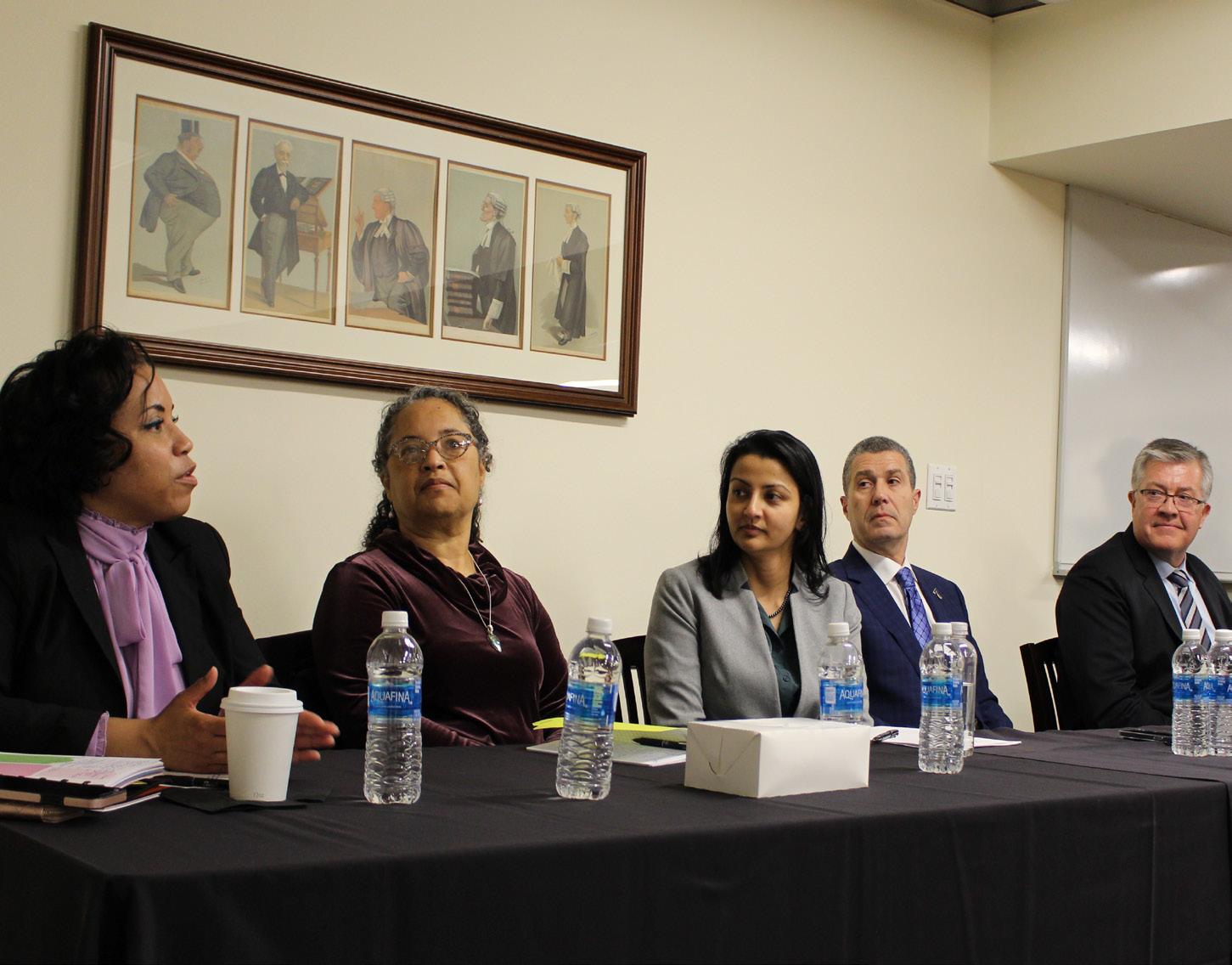
RJI, which was officially announced and launched in the fall, brings together students, lawyers, researchers, policymakers and activists to develop community-based solutions to further racial justice in Chicago and Illinois.
“As we celebrate Black History Month, it’s important to acknowledge the challenges facing Chicago, the state of IL and the nation on the racial justice front,” said Manoj Mate, associate professor of law and the faculty director of RJI, at Wednesday’s kickoff. “Historic and present-day structural discrimination and inequality remain pervasive across all aspects of our constitutional and political system and our economic system.”
A combined over 90 students and members of the broader community attended the event both virtually and in-person.
It featured five panelists: Tony Romanucci of Romanucci & Blandin and attorney for the families of George Floyd and Tyre Nichols, Aisha Edwards
of Cabrini Green Legal Aid, DePaul Prof. Christina Rivers, Ami Gandhi of Chicago Lawyers Committee for Civil Rights and Stephen Blandin of Romanucci & Blandin.
The panelists each shared their own experiences using law in attempts to further racial and societal equity. Topics ranged from voting rights and felon disenfranchisement to housing inequality and police accountability.
Romanucci discussed how his time as a public defender, when he said he witnessed police officers plant evidence on several of his clients, shaped how he approached being a trial lawyer and representing the families of Floyd and Nichols.
“I think our discussion here today would be moot unless you leave here today just a little pissed off,” Romanucci told attendees. “If you don’t, you’re not going to leave here and try to make the change that is necessary.”
It was that assertion by Romanucci that Mate found to be the most striking for those in attendance.
“I thought that was a really impactful moment for students to realize that the broader goal of the initiative and the event is not just to raise awareness about some of these issues, but for students to feel motivated and upset about the cur-
College Prep. Additionally, Murray is a director for the National Association of Securities Professionals (NASP), the Chicagoland Chamber of Commerce and is a member of the DePaul University department of finance advisory board, the office of the secretary bio states.
The role of board members
College or university board members are responsible for guiding the institution toward their mission, according to the Grand Thornton higher education board handbook.
The handbook states some other key tasks board members are responsible for include selecting the president, ensuring the institution is well-managed, holding university leadership
accountable to ethical standards, representing the institution in the outside world, protecting the institution from external threats, overseeing assets, protecting the institution’s reputation, approving key policies and ensuring the institution is in compliance with laws and regulations.
“I’m delighted [that] DePaul's Board of Trustees is gaining three leaders in the financial and hospitality industries who will serve as tremendous assets to our university,” DePaul president Robert L. Manuel said in a university press release. “Our newest trustees will further strengthen our board as we deliver on the commitment to shared governance while also deepening our ties to our Catholic, Vincentian mission and extending DePaul’s social capital.”
rent state of racial justice, civil rights, social justice in our nation,” Mate said.
For Nathan Fleming, the racial justice fellow of RJI, this goal is exactly why it’s so important for this initiative to be based in Chicago – a city that is widely regarded as one of the most segregated in the United States and home to racial disparities that affect healthcare, income and policing.
“The [issues] that many urban jurisdictions face are potent and present in the city of Chicago,” Fleming said. “When we make progress in Chicago, it has the national significance that can help us to gain momentum to make change in other urban environments
throughout the country.”
Mate said that RJI has other events tentatively planned over the next several months. He hopes that a broader conference on racial justice will be put on by the initiative in the fall.
Based on the success of Wednesday’s inaugural panel, Mate believes that launching an initiative like RJI was overdue.
“For a while now, the law school community has been wanting a space, some type of group or infrastructure that could address issues like the ones we’re addressing,” he said. “Given the turnout we saw at the event, I think that is proof that there has been this demand.”
‘I’m not sure what would make them care’
Students continuing to follow pandemic protocol express anger, exhaustion over decision to end public health emergency
By Lilly Keller Arts & Life EditorAt age 11, Abby Hawkins was diagnosed with type one diabetes, an autoimmune disease characterized by the pancreas's inability to produce insulin. Not only was Hawkin's now required to inject herself with insulin multiple times per day, but she had to start taking her health much more seriously.
Catching certain diseases or infections could be deadly for Hawkins due to her body’s inflammatory response spiking her blood sugar levels, triggering conditions such as diabetic ketoacidosis and kidney damage or failure. Still, no number of precautions could have prepared Hawkins for the public's reaction to the Covid-19 pandemic.
"It's frustrating to see that when I'm in the U.S. or around people from the U.S., the majority of people do not take the pandemic seriously," Hawkins said. "People are more concerned with going back to ‘normal’ without the pandemic being over."
Currently attending graduate school in Germany, the George Mason alum articulates exasperation over The White House's recent decision to end the Covid-19 public health emergency on May 11. More than three years will have passed since Covid-19 was first detected in Wuhan, China.
"The current measures that are mandated are not enough to prevent spread of disease or mitigate the pandemic, so lifting these protocols will only lead to an increased spread of disease," Hawkins said.
Although nearly three months stand between the federal government and restructuring, the future of treatment and prevention remains vulnerable. During the pan-
demic's initial months, millions of Americans remained continuously enrolled in Medicaid as part of the Families First Coronavirus Response Act (FFCRA).
Following the order's termination, the Medicaid continuous enrollment enactment will end March 31, leaving an estimated 5.3 to 12.4 million without coverage. Without insurance, individuals will have to pay full price for vaccines ranging from $80 to $130.
However, Moderna recently announced that they will continue providing free vaccines to uninsured or underinsured individuals.
Still, according to a study conducted by Axios and IPSOS, 46% of Americans have returned to their pre-Covid-19 lives, with only 37% continuing to wear masks outside their homes.

"Unfortunately, adapting to this current reality has never taken into consideration disabled people or other populations that remain at risk for diseases like COVID," Hawkins said. "So, for immunocompromised and disabled people, the idea of returning to a normal that never considered our safety has never been the goal."
DePaul junior Anabel Diaz continues to wear a mask and practice habits like regularly washing her hands to reduce her chances of catching an illness.
"As an immunocompromised individual, when I am sick it is a bit more severe than someone who isn't. I could spend weeks getting over a cold and longer fighting off a virus," Diaz said. "It is a different time now then what it was a year ago and two years ago. Our immune systems and the vaccines we have received from the pandemic have definitely helped both ease our minds and our bod-
ies. But Covid-19 isn't cured or will ever be cured."
Following Omicron's initial spike last winter where the U.S. saw more than 4 million cases per week, many individuals loosened or dropped their precautions altogether, burdening those like Diaz with the weight of her health and others.
"I feel like it was my own personal responsibility to myself to keep following protocol but was understanding why others stopped completely," Diaz said. "The pandemic is still happening, but I think it's also time to start moving some of the attention to the negative effects it has on our education system, homeless population and the change of our workplace."
DePaul Bioethics professor Craig Klugman — and member of the University's Covid-19 health task force — believes that the nation's radical individualism will prevent many from ever taking the pandemic seriously again.
"When this all started, there was this message of we were in this together and we were wearing masks to help our neighbors," Klugman said. "Then it became, we're wearing masks to help our neighbors and ourselves. And now it's like, wear a mask if you want to, it's like the whole onus is on to take action now."
Despite the majority of Covid-19 cases being mild, Klugman expressed fear over the long-term effects of the disease, especially concerning long Covid-19.
"We have found that this is a virus that stays in the body. Even if you're not sick, you have it," Klugman said. "We don't know what this being in the body is going to do longterm. We know it's probably something to
do with inflammation. I was reading a paper yesterday that says there's an increase in breast cancer two years after women have COVID-19…like we just don't know."
Furthermore, only 33% of Americans have received their updated Bivalent booster, which offers increased protection against Omicron, leaving many vulnerable to the virus's many variants and subvariants.
"In this new era of living with 550 deaths a day, we have decided that we're not in it together,” Klugmain said. “That's a philosophical shift and I think it's a shift made to protect the economy."
For DePaul junior Chloe Crosby, Biden’s announcement felt like an excuse to get as many people as possible back in the office and working again no matter the outcome.
"I definitely don't think Covid-19 is over just because Biden says it is. A lot of the ending of protocols seems like a capitalistic cry for people to return to work with little care for the implications," Crosby said.
While vaccines and treatments like Paxlovid have aided in controlling Covid19’s spread, roughly 3,000 people continue to die every week due to the virus, on top of approximately 300,000 weekly cases, according to the CDC.
Crosby, who continues to take pandemic protocols, believes that most individuals will refuse to return to masking and to limit social interactions, even if a new vaccine-resistant variant does appear.
"A lot of people got fatigued by the pandemic and their way of dealing with it is to pretend like it doesn't exist so I'm not sure what would make them care," Crosby said.
made a difference’ Ashley Stone tackles topics of
sociology at DePaul
By Una Cleary Focus EditorAs a Bronzeville native and DePaul alumna, Ashley Stone, the new Ida B. Wells teaching fellow, takes her work beyond the walls of the classroom and into the communities of her city. For Stone, Chicago and DePaul are home.

Hired in August 2022, her work as a fellow includes teaching on subjects of sociological theory, race and intersectionality while giving her the flexibility to continue research projects and time to work on her publications. After getting her Ph.D. from the University of Central Florida, Stone’s goal was to always come back to the city that never fails to inspire her.
“I'm never out of research ideas because Chicago, while it has its challenges, [is] a city that is going to make you think, it's going to make you grow, and if you're lucky, it will inspire you too,” Stone said.
Activism and social movements influenced her at an early age from relatives involved in the civil rights movement and educators that took her learning beyond the classroom.
For Stone, Ida B. Wells was a central role model growing up in the shared home of Bronzeville, which translated to much of her work and research focusing on the exclusion of Black women from the sociology curriculum nationally.
Wells was an early leader in the civil rights movement battling sexism and racism. As a skilled journalist, she shed light on the racial disparities in the South.
“A lot of the foundations of intersectionality came from Black feminist work as early as the late 1800s from people like Ida B. Wells,” Stone said. “We often leave women out, we often leave people of color out, which means that Black women are often left out even though they make significant contributions to the discipline.”
Currently, Stone is teaching an intersectionality course and plans to teach a Ida B. Wells course in the spring designed to talk about her life and legacy.
“I think it's so critical to read her work because we see some of the same patterns today with the power dynamics, who gets oppressed and whose power is amplified in this country,” Stone said.
Working with the Steans Center for community-based service learning, Stone is collaborating with community activists while strengthening ties to her Bronzeville legacy.
Associate Director of the Steans Center, Helen Damon-Moore, worked with Stone as she facilitated a workshop on negotiating identity in the community and the classroom.
“She made a real difference in helping her faculty person to reflect on their practice,” Damon-Moore said.
Stone's latest research project focused on the inclusion and exclusion of Black women from the sociology curriculum. Through analyzing nationwide syllabi from Ph.D. programs across the country, Stone found that classical theorists were overwhelmingly white men according to her study.
Stone believes this stems from a reproduction of knowledge from facilities' graduate programs and their lack of diverse curricula.
“In a society where we’re talking about diversity, equity and inclusion more, why do we not see these scholars who write about these things in the curriculum more often?” Stone said.
What is the ABD studies program?
African and Black Diaspora Studies (ABD) is an interdisciplinary department at DePaul that provides its students with an opportunity to study the diverse cultures and societies that make up the global African Diaspora. African and Black Diaspora Studies encourages its students to explore the Black experience from a variety of theoretical and disciplinary perspectives including but not limited to historical, artistic, sociological, anthropological, and philosophical approaches. ABD prepares its students to be socially conscious global citizens prepared with the tools of analysis, oral and written communication, and cultural understanding needed to succeed in today's world.
She also found that female faculty who taught classical theory tended to be the ones to not include women, while men tended to include Black women more.
“I think it's because they want to be seen as legitimate,” Stone said. “Because of sexism, to be validated, [women are] stuck with Marx, Weber and Durkheim.”
Through her research and publications, Stone has translated what she has learned into how she wants to teach.
For the Journal of Women, Gender and Families, she wrote “Changing Poison in Medicine,” which reflected on her time in graduate school as a woman of color experiencing racism and sexism. As a Buddhist, she reflected on that adversity and made it valuable.
“That's the publication that I come back to just thinking about what students have to deal with, similar to what I went through as a student but very different,” Stone said. “How do I really consider
the whole student in my class and know they’re not just a number on a roster?”
Presidential faculty fellow and chair of the African and Black Diaspora Studies department, Amor Kohil, feels that Stone’s work has a real impact on higher education.
“Dr. Stone’s upcoming classes are themselves significant contributions to the curriculum available to DePaul students,” Kohil said. “Particularly the work that examines the inclusion and exclusion of Black women’s scholarship from curricula-is poised to have a real impact on higher education.”
At the end of the academic quarter and her time teaching at DePaul, she hopes to have helped students make connections to the outside world through personal development.
“It's also helping students challenge what they have learned in their lives,” Stone said. “It's a process of doing, but it's [also] a process of undoing.”
Classes Stone will teach in the spring
Ida B. Wells: Gender, politics, and activism
Topics in African American studies
Topics in American race and ethnic studies: Ida B. Wells gender/politics seminar
Advanced topics in American race and ethics studies: Intersectionality seminar
Special topics in critical ethnic studies: Intersectionality seminar
Topics in community development, advocacy, and activism: Ida B. Wells gender, politics, activism
‘She’s
intersectionality,SOURCE | DEPAUL COLLEGE OF LIBERAL ARTS & SOCIAL SCIENCES
Shift to conservatism makes voters prioritize values in local elections
By Kiersten Riedford News EditorFormer President Donald Trump announced he will be running for the 2024 presidential campaign on Nov. 15, 2022. Trump’s divisive presidency has conservatives expecting the division of the Republican Party, according to National Public Radio (NPR).
Since 2020, many Republicans have been conflicted about the ideals Trump and other far-right politicians have brought into the public eye. Some include cracking down on immigration laws, repealing the Affordable Care Act and enforcing the second amendment. While some are on board with Trump’s ideas, others want a leader with more moderate political views and who is willing to listen to the people.
The shift to a divided Republican party is something many see as a troubling barrier to getting their prospective leaders in government. But, Ryan Williams, senior and president of the DePaul Republicans club, said he likes the direction the party is moving.
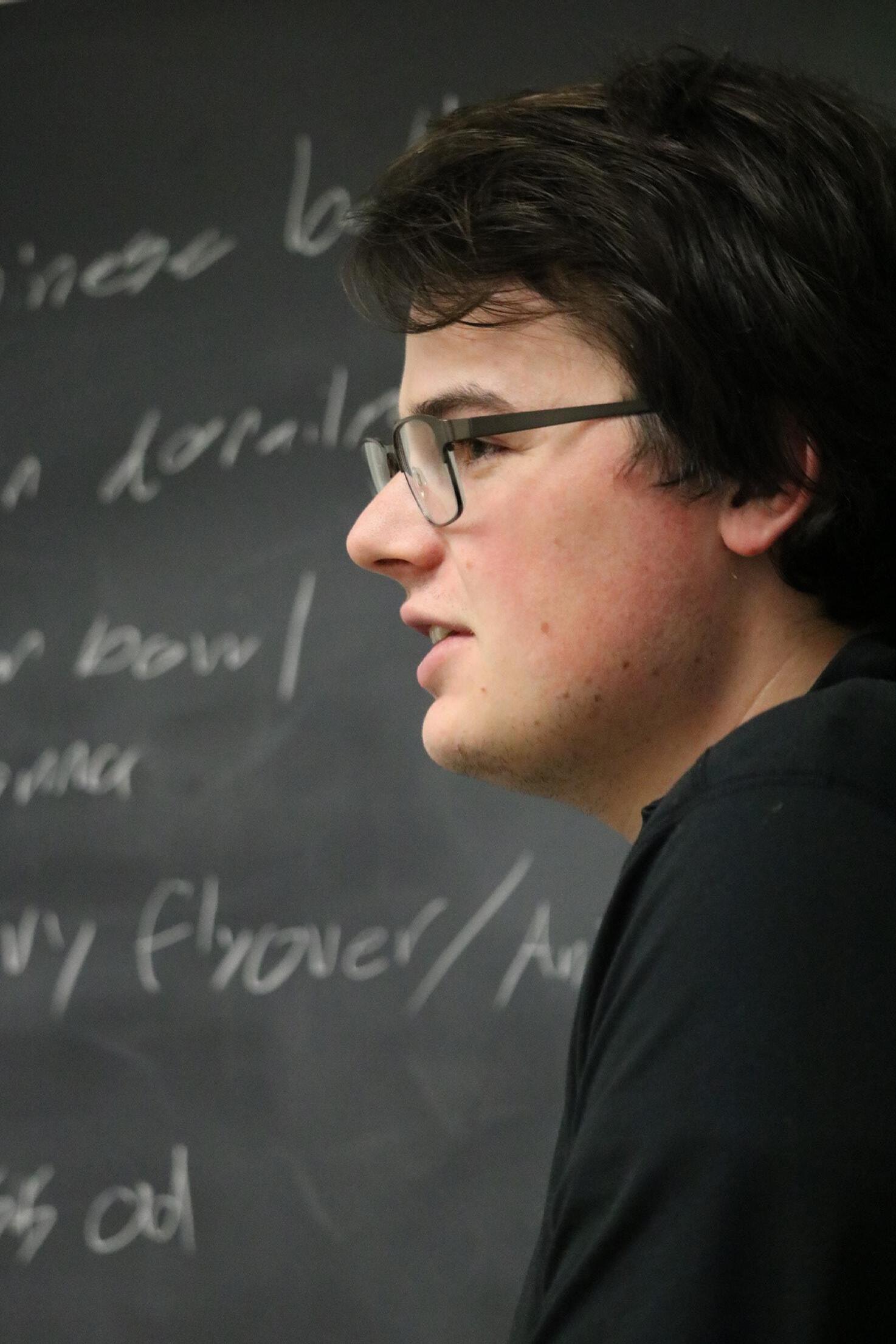
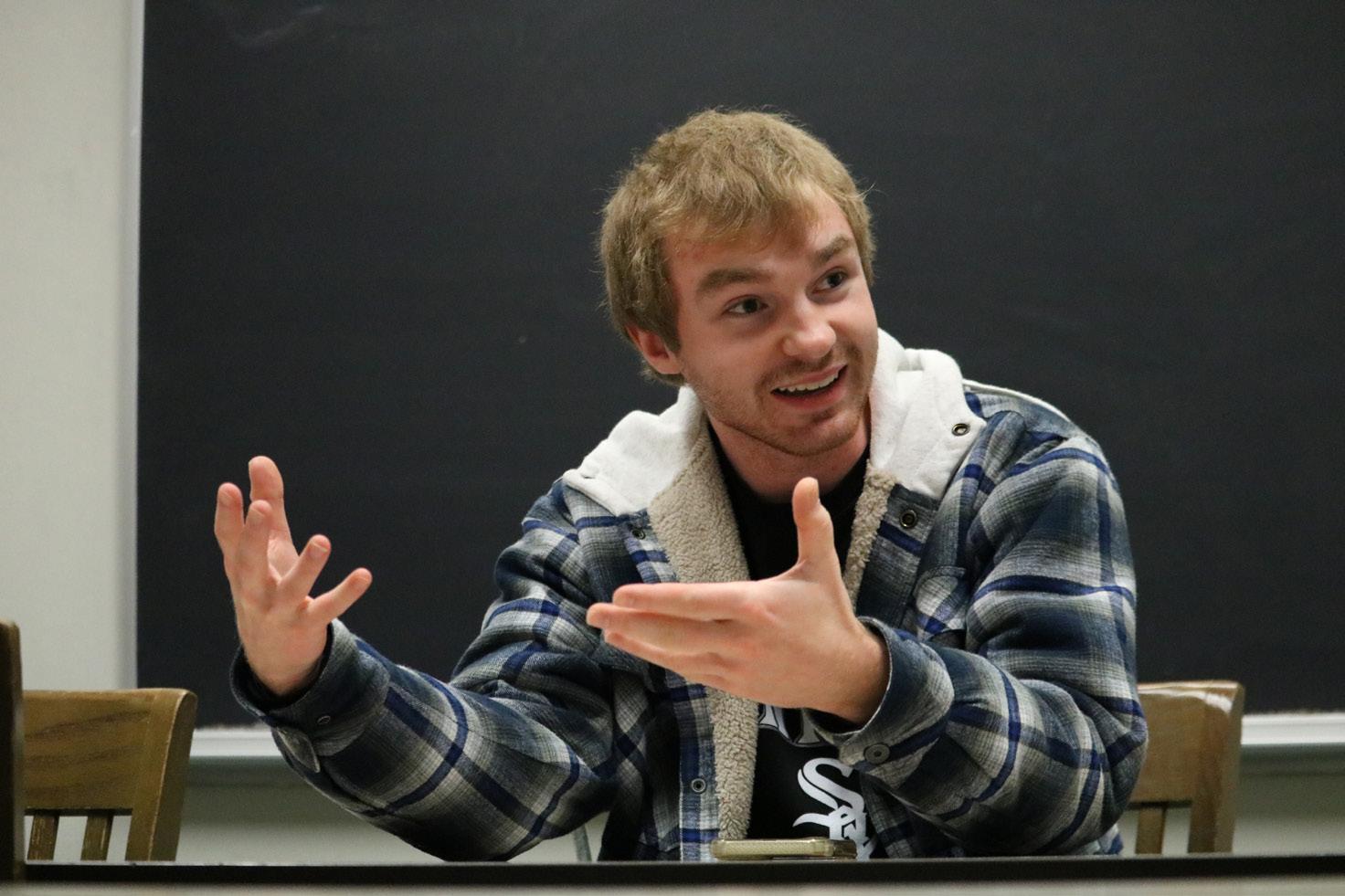
“It goes back to what the founding fathers originally intended for our elected leaders,” Williams said. “To look like more normal people who don’t really have any interest in gaining power, but rather just reflecting the values of the people they represent.”
Ben Epstein, DePaul associate professor of political science, said conservatism is a political ideology and is much more nuanced than partisanship. But “conservative ideas are shaped by partisanship and we are living in an era of extreme polarization.”
As a result, Epstein said the shift is largely due to contradictory party views that emerged during the Trump presidency.
“They are less about long held ideas that are economic or socially conservative and more about ideas that are connected to cultural conflicts and Trumpian ideas,” Epstein said. “Republicans in Chicago, which is a very Democratic city, have the opportunity to choose whether they are more guided by conservative principles or Trump's ones.
In Cook County, 74% of the population voted Democrat in the 2020 presidential election, 24% voted for the Republican Party, and the remaining voted Independent, according to the Federal Election Commission.
Ja’Mal Green, one of the Chicago mayoral race candidates, said he is proud Chicago is a strongly Democratic city.
“We don't have much conservatism,” Green said. “We probably have a couple of conservatives in the race who support some conservative views, but we don't have super right-wing [candidates].”
Green said there are people in Chicago that do support far right-wing views, but they are mainly small pockets of people who do not have much influence in elections, which Green said is good.
“I'm the first and the only organizer to ever shut down the Trump rally,” Green said. “When Donald Trump started, we organized 13,000 people to surround the rally and be inside and out and make it to where he decided not to come to that rally.”
Green said the protest shows that many in Chicago “reject conservatives.”
“We don't play with the right-wing theories and the policies that they sup-
74.2%
In Cook County, 74.2% of the people voted Democrat in the last presidential election
24%
In Cook County, 74.2% of the people voted Republican in the last presidential election
1.8%
In Cook County, 74.2% of the people voted Independent in the last presidential election
13,000
In 2020, Ja'Mal Green helped lead 13,000 people in Chicago to make Former President Donald Trump not hold a rally downtown
Williams said conservatives will inevitably continue living in the city, so telling people to move out of Chicago if they do not feel represented enough is “a very closed-minded attitude.”
“[When] working with a wide range of people, which, when you're going to be mayor, that's something you're going to have to do,” Williams said. “You're going to have to work with people from all different parts of the city with different beliefs, different backgrounds. And if you can't, if you're in your campaign, you're saying that this group of people, regardless of what they think, shouldn't be in the city? Well, I don't think that's going to reflect well on your ability to be a collaborative mayor.”
Williams said he encourages voters to look at each candidate’s background and their values, both what they are and will be promoting over the coming years.
port against us,” Green said. “We stand up against that [and] we organize against it. And that's the sentiment of the majority of our city.”
Even though Democrats maintain the majority vote in Chicago, conservatives still look to vote for candidates in local elections that represent their values. Especially with most republicans in Chicago being parents, Williams said they tend to look for “safety, affordability...and a well-funded school system.”
Green said that if the conservatives in Chicago do not like the candidates or the values that are presented to them in elec -
tions, they should move “to an environment that is conducive to their values.”
Epstein said Americans have been moving to places with more homogeneous ideological makeup, reflecting Green’s statement. But over time, with this same sentiment across the country, more conservative and liberal areas are becoming more polarized.
“All places have conservative and liberal people and ideas, as well as more moderate ones,” Epstein said. “Even in a large progressive city, all ideas are present and should be part of the debate around how the city should be run.”
“It's not so simple anymore to look at someone's political party that they're under and know what they actually believe and what they will stand for,” Williams said. “So when you go to vote now, you really need to look into what issues are important to you.”
For those looking to vote in the mayoral and aldermanic elections, early voting is open and will continue to be open to the public until Feb. 28. The Chicago Board of Election Commissioners has a list of open voting locations, their hours, addresses and which ward they are in.
Living with intention
Life as a student with Epilepsy
By Madeline Ruhl Contributing WriterKiley Flowers, a DePaul University senior, lives with epilepsy, a neurological disorder characterized by recurrent episodes of seizures. She lives independently in the city and is able to lead a functional life taking classes, hanging out with her roommates and, most importantly, is seizure-free.
Flowers first received her diagnosis in 2014.
This diagnosis came after experiencing seizure episodes and doctor and hospital visits at 13. She was told by doctors that she would never be able to live on her own, never be able to drive and would most likely be collecting disability for the rest of her life.
“In some ways, I was relieved that I finally knew what was wrong with me,” Flowers said. “For so long, they had no idea what my diagnosis was, but ultimately, it felt like my life was over.”
Kiley also recalled that with the diagnoses, she began having severe depression in which she would not even be able to get out of bed, soon accepting that looming seizures were her fate forever.
According to the Center for Disease Control and Prevention (CDC), over 3.4 million people are living with epilepsy nationwide. If left untreated, it can result in long-lasting seizures, and in rare cases SUDEP, which is sudden unexpected death.

Yet, every assumption her doctors have had about the future have been untrue. After spending years changing medications,with the help of her doctor, she was able to secure the perfect prescription. She is happy to report that she is thriving at DePaul. She even notes that it has changed her mind set to appreciate her life.
“I never take getting out of the bed in the morning for granted because there were days that I thought I wouldn’t ever be able to,” she said.
Epilepsy has also affected the lives of her roommates who felt as if their lives had also been changed by epilepsy, but for them, it was for the better.
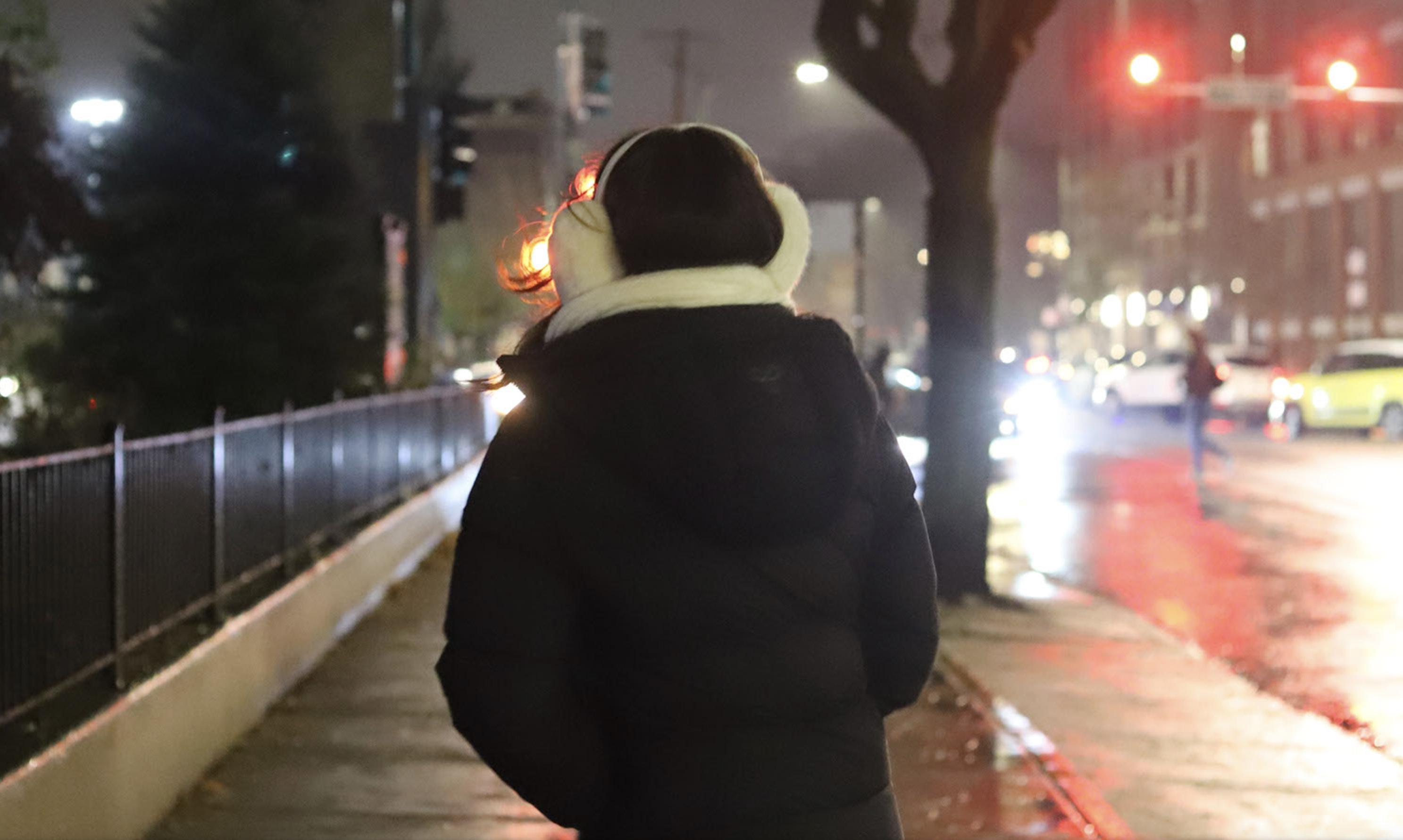

“Living with someone with epilepsy has made me more aware of hazards that I used to never think twice about,” wrote Nadia Chavez, Flowers’ roommate, in an email.
She talked to me about a time that the light started flickering in their apartment bathroom and Chavez would have thought nothing about it originally but remembered the negative effects on Kiley and made sure to change it.

This is not without work. Flowers has created a lifestyle for herself that has been able to ensure there are not unexpected seizures. Her day includes daily walks, midday naps, rigorous medications and making sure she stays out of flashing lighting.
The university also ensures that Flowers and every other student living with her same diagnoses can live and study safely. When reaching out to the Center for Students with Disabilities, assistant director,
T.C Schneck commented that students with epilepsy at DePaul are set up for success and said students can “… submit a Seizure Action Plan, which is written and signed by their doctor.”
This plan would list:
1. The kinds of seizures the student experiences and how often they occur.
2. The corresponding symptoms of each seizure type.
3. Specific actions faculty should take in regards to each seizure.
With these added security measures,
Flowers is able to pursue an education with DePaul.
Flowers is fortunate enough to not let the diagnoses define her. Her medications have been consistent for the past two years, which is why she is able to tell her story today.
“With getting the diagnoses and being on meds, you have to get in the mindset of being prepared if things go wrong because things go wrong in an instant,” she said. This is why she believes she is so mindful and intentional about her life. She has
to value every second she has because she knows what it was like to not know if she would be alive the next day.
While Flowers’ future is unknown, she knows that she will value every day she has and that the education and independence she feels grateful to receive was not without years of struggle. Flowers is currently on track to graduate with a master’s in PR and advertising next year. She remains intentional and while she will carry epilepsy with her for the rest of her life, she is glad she can live it out.
Nation & World
How dangerous was the Ohio chemical train derailment?
An environmental engineer assesses the long-term risks
By Andrew J. Whelton The Conservation via APHeadaches and lingering chemical smells from a fiery train derailment in East Palestine, Ohio, have left residents worried about their air and water – and misinformation on social media hasn’t helped.
State officials offered more details of the cleanup process and a timeline of the environmental disaster during a news conference on Feb. 14, 2023. Nearly a dozen cars carrying chemicals, includ
ing vinyl chloride, a carcinogen, derailed on the evening of Feb. 3, and fire from the site sent up acrid black smoke. Officials said they had tested over 400 nearby homes for contamination and were tracking a plume of spilled chemicals that had killed 3,500 fish in streams and reached the Ohio River.
However, the slow release of information after the derailment has left many questions unanswered about the risks and longer-term impact. We put five questions about the chemical releases to Andrew Whelton, an environmental engineer who investigates chemical risks during disasters.
Let’s start with what was in the train cars. What are the most concerning chemicals for human health and the environment long term, and what’s known so far about the impact?
The main concerns now are the contamination of homes, soil and water, primarily from volatile organic compounds and semivolatile organic compounds, known as VOCs and SVOCs.
The train had nearly a dozen cars with vinyl chloride and other materials,
ficials have detected some of those chemicals in the nearby waterway and particulate matter in the air from the fire. But so far, the fate of many of the chemicals is not known. A variety of other materials were also released, but discussion about those chemicals has been limited.
State officials disclosed that a plume of contamination released into the nearby creek had made its way into the Ohio River. Other cities get their drinking water from the river, and were warned about the risk. The farther this plume moves downstream, the less concentrated the chemical will be in water, posing less of a risk.
Long term, the greatest risk is closest to the derailment location. And again, there’s limited information about what chemicals are present – or were created through chemical reactions during the fire.
It isn’t clear yet how much went into storm drains, was flushed down the streams or may have settled to the bottom of waterways.
There was also a lot of combusted particulate matter. The black smoke is a clear indication. It’s unclear how much was diluted in the air or fell to the ground.
How long can these chemicals linger in soil and water, and what’s their potential long-term risk to humans and wildlife?
The heavier the chemical, often the slower it degrades and the more likely it is to stick to soil. These compounds can remain for years if left unaddressed.
After the Kalamazoo River oil pipeline break in Michigan in 2010, the U.S. Environmental Protection Agency excavated a tributary where the oil settled. We’ve
coasts of Alaska and Alabama that oil chemicals can find their way into soil if it isn’t remediated.
The long-term impact in Ohio will depend in part on how fast – and thoroughly – cleanup occurs.
If the heavily contaminated soils and liquids are excavated and removed, the long-term impacts can be reduced. But the longer removal takes, the farther the contamination can spread. It’s in everyone’s best interest to clean this up as soon as possible and before the region gets rain.
Booms in a nearby stream have been deployed to capture chemicals. Air-stripping devices have been deployed to remove chemicals from the waterways. Air stripping causes the light chemicals to leave the water and enter air. This is a common treatment technique and was used after an 2015 oil spill in the Yellowstone River near Glendive, Montana.
At the derailment site in Ohio, workers are already removing contaminated soil as deep as 7 feet (about 2 meters) near where the rail cars burned.
Some of the train cars were intentionally drained and the chemicals set on fire to eliminate them. That fire had thick black smoke. What does that tell you about the chemicals and longer-term risks?
Incineration is one way we dispose of hazardous chemicals, but incomplete chemical destruction creates a host of byproducts. Chemicals can be destroyed when heated to extremely high temperatures so they burn thoroughly.
The black smoke plume you saw on TV was incomplete combustion. A number of other chemicals were created. Of -
were or where they went until they test for them.
We know ash can pose health risks, which is why we test inside homes after wildfires where structures burn. This is one reason the state’s health director told residents with private wells near and downwind of the derailment to use bottled water until they can have their wells tested.
The EPA has been screening homes near the derailment for indoor air-quality concerns. How do these chemicals get into homes and what happens to them in enclosed spaces?
Homes are not airtight, and sometimes dust and other materials get in. It might be through an open door or a window sill. Sometimes people track it in.
So far, the U.S. EPA has reported no evidence of high levels of vinyl chloride or hydrogen chloride in the 400 or so homes tested. But full transparency has been lacking. Just because an agency is doing testing doesn’t mean it is testing for what it needs to test for.
Media reports talk about four or five chemicals, but the manifest from Norfolk Southern also listed a bunch of other materials in tanks that burned. All those materials create potentially hundreds to thousands of VOCs and SVOCs.

Are government officials testing for everything they should?
People in the community have reported headaches, which can be caused by VOCs and other chemicals. They’re understandably concerned.
Ohio and federal officials need to better communicate what they’re doing, why, and what they plan to do. It’s unclear what questions they are trying to answer.
MSU community grieves in the wake of tragic shooting
By Ruchi Nawathe Nation &Students and community members at Michigan State University (MSU) are reeling from a shooting on Monday, Feb. 13 that killed three and injured five.
“My roommate and I barricaded the doors and saw what we could use as weapons around the room, while listening to the police scanner,” said MSU freshman Kushi Sulabelle. “We were ready to be evacuated at any moment, but also prepared to be stuck in our dorm until the morning. I was on FaceTime with my dad and sister. They refused to get off the call for those four hours. Even when I got off the call to check on my friends, they made sure that I would join back again.”
According to Sulabelle, the first security email about the shooting was sent at 8:35 p.m., 17 minutes after shots were initially fired.
“My thoughts after the shooting was, ‘Again?’” Sulabelle said. “It is just too common. I have gone to too many vigils. At this point, it feels like I am asking ‘When is the next shooting?’”
Many MSU students are still coming to terms with the events that took place last Monday.
“Learning people were actually shot, and after the fact, learning I sat next to Alexandria [Verner], (one of the victims) in physics class, it was a bit surreal,” said MSU junior Kaiden Ditchman. “I didn’t know her well, but I interacted with her on multiple occasions in class.”
As MSU students received mass emails warning of the active shooting, the initial reaction for many was confusion.
“At first I was in shock and disbelief when I saw the campus security messages,” said MSU junior Josh Pierre. “We have never seen an email like that before.”
Ditchman also held some disbelief when the emails were initially sent out, citing an email that was sent out warn-
ing students about gunshots that turned out to be the noise from a loud car.
The gunman, 43-year-old Anthony Dwayne McRae, roamed the MSU campus for four hours as students and faculty members barricaded doors and switched off lights in the nearest room where they could hide. At the end of the four hours, McRae died from a self-inflicted gunshot wound.
Ditchman was hiding in a room with his roommates, windows shut and lights off, at the time of the shooting.
“I was listening to the police scanner when it happened, and heard ‘When
On Saturday, Chicago Spartans hosted a candlelight vigil at Tree House bar and restaurant in River North. Around 200-300 people showed up, including current students, recent graduates and those who had graduated many years ago. Most people were wearing their MSU gear or the color green.

As the vigil started, the lights in the room shifted to green, and some speakers from Chicago Spartans spoke, after which a moment of silence was held where all those in attendance lit their candles in solidarity with the victims.
At the end of the vigil, the crowd
eryone I know is safe and okay, but it was a terrifying experience,” Mistry said. Mistry came home to Chicago last Monday, like many other MSU students, and wanted to show support for the victims and be surrounded by her fellow Spartans.
“I just wanted to pay my respects and be able to be with the community that everyone is supporting and loving,” Mistry said.
The MSU community has banded together in support of the victims of the shooting, and some students feel more bonded with the community now than they did before.
“In such a heavy time, it is nice to see so many different members of the community supporting each other,” Sulabelle said. “People are just offering whatever they can — in time, money, companionship, food, services and so much more.”
Sulabelle feels bonded to her Spartans community, which makes coping with the shooting much more bearable.
“Even though it was nice to come home, I find myself wanting to go back to campus [as soon as possible], so I can be with my fellow Spartans,” Sulabelle said. “Also, this incident shows how far the community support expands. For example, seeing our rival school, University of Michigan, supporting Spartans at the basketball game is so sweet.”
MSU freshman
Adjusting to campus life after this tragedy might be difficult for many MSU students and faculty.
approached, the subject shot himself,’ or something along those lines, and my first reaction was we will never get a motive or a reason why he did what he did,” Ditchman said.
McRae had no confirmed affiliation with MSU, according to NBC. As of now, there is no known motive for the shooting.
The Spartans community is hosting fundraisers and vigils for the victims of the shooting. They are also organizing protests calling for new gun laws, according to Pierre.
sang the MSU fight song, and flyers were passed out with QR codes to volunteer and donate in support of the victims.
After the vigil, the organizers played an MSU basketball game on the screens at the Tree House bar and restaurant.
One of those in attendance was Eshana Mistry, sophomore at MSU, who was on campus at the time of the shooting.
“I had my friend come into the room, we barricaded the door, and we were sitting there for what felt like an eternity, and I was texting all of my friends and my family, and I’m so thankful that ev-
“Walking on campus will never feel the same,” Ditchman said.
While the environment at MSU might be changed forever in the minds of some, many feel closer to their communities than ever before.
“We will slowly bounce back from this tragedy, it may take a while and things will never be the same, but I believe we’ll be stronger and the Spartan community will be closer than ever,” Pierre said.
World Editor PATRICK SLOAN -TURNER | THE DEPAULIA A candlelight vigil was held on Feb. 18 at the Tree House bar and restaurant in River North. The event was attended by members and supporters of the Chicago Spartan community.“My thoughts after the shooting was, ‘Again?’ It is just too common. I have gone to too many vigils. At this point, it feels like I am asking ‘When is the next shooting?’”
Kushi Sulabelle
Opinions
CJ MCKENZIE I THE DEPAULIADo people really need to watch videos of police brutality to be informed?
By Zoe M ateja Contributing WriterPolice brutality caught on body cameras, war crimes, live combat footage and bombings are all videos that have probably surfaced on our social media feeds. The jarring nature of this content makes us all either scroll quickly, or click immediately. Although studying the information in front of us, watching the footage, and formulating our own opinions may be a jarring experience, it also is the smartest thing we can do.

Some people may think that the footage being posted is far too graphic and prefer to stick to reading about the tragedies and watching the recap on the nightly news. Others may believe that we have a moral obligation to see the content for ourselves and process the reality of real-world hardships.
The videos in our social media feeds display difficult footage of other people’s experiences in the world, and although it may be uncomfortable to witness, it is informative and beneficial for understanding of what is happening around us.
Recent footage of Tyre Nichols’s fatal interaction with five officers was shown on TV. The video showed Memphis police officers brutally beating, kicking and pepper spraying him, which led to his passing three days after.
The release of the video caused an uproar of peaceful protests, petitions and activists to speak out against police
brutality. This propelled a conversation of whether people should view the footage of Nichols or simply watch the news and read articles about what happened.
DePaul film studies professor Kyle
to watch the footage to ensure that their opinions are informed opinions.”
DePaul student Ryan Deitch shares a similar stance to Barrowman, saying that we should be watching sensitive footage because it allows us to form our own individual interpretations.
“People need to see things with their own two eyes and they need to draw their own conclusions based on how they feel about things and their own experiences and their own sensibilities,” Deitch said.
So far, two in five Americans have seen partial or full footage of Nichols’s attack, opening up a wide conversation of censorship and what it means to have the ability to see the footage and formulate our own stances, according to YouGovAmerica.
Barrowman says that censorship is not the answer and the footage should be available to those who wish to see it.
“I do not think that the Average Joes and Janes of the world have a moral obligation to watch every video that surfaces of every street fight, domestic abuse incident, police beating, mass shooting, etc,” Barrowman said. “However, for people who are socially or politically involved in the matters (i.e. TV news anchors, politicians, podcasters, etc.), I do believe that they have a moral obligation
“Ultimately, it is real content,” Deitch said. “That’s what the world is. Those are things that are happening in the world, and to shelter ourselves from that is to wrongly insulate ourselves from real occurrences in the world.”
Graphic and disturbing footage such as war footage may be difficult to sit through, but allows us to form our own opinion rather than letting reporters and social media inform us of what they saw. A lot of times, the world is not always kind and forgiving, and we have the opportunity to see what is happening around us through these videos.
Oakton College student Zina Abood also shares her stance on the matter, agreeing with both Barrowman and
Deitch’s points of view.
“I wish it wasn’t there, but I love that it's getting the exposure it's needed so hopefully, we can do something about it rather than it just being on news channels because it is an uncomfortable subject and a lot of people wish to just avoid it.” Abood said. “We have the privilege to just avoid it, but a lot of people don’t.”
Ultimately, the viewer still individually has a choice of whether to view the content or not. It is our individual right to be able to have access to the footage if we wish to form our own opinion, and because of the quickly rising digital age, we can do so at our own risks.
Because of the nature of the videos, someone may stick to solely reading about the tragic occurrences instead of viewing. However, this is not the most beneficial course of action. We live in a time period where we can formulate opinions through these videos as if we were there and directly witnessed these instances.
“When you see it, it’s imprinted in your brain, because a lot of these things, they’re hard to forget,” Abood said. “I like that it's hard to forget, because a lot of people list through them, and if nobody’s doing anything about them because they don’t want to be uncomfortable by it, then nothings going to get done, and more mortality will spread [meaning death tolls will continue to rise].”
“People who are socially or politically involted in the matters... I do believe they have a moral obligation to watch the footage"
Kyle Barrowman DePaul Film Studies Professor
MSU, continued from front page time machine. I get to see old friends and teachers. I’m comforted when I hear the band playing the alma mater as I walk through a campus that I could navigate with a blindfold on.
For the students on MSU’s campus last week and others in East Lansing, any warm feelings of nostalgia and the comfort of home are now tainted by the odor of gunpowder and echoed screams. They’re tainted for me too. At times it has felt as though someone walked in my front door and wreaked havoc in my home. I hope that comfort isn’t tainted forever.
I can’t blame you if you’re like me and you’ve succumbed to the everyday-ness of mass shootings. I’m ashamed that it took this happening at my home for me to feel something again, but I hope you’ll read this and not want to be like me.

To a fault, I’m usually not the most emotional guy. For me, vulnerability equals discomfort. But I’ve cried more over the past seven days than I have in quite some time. I can say with certainty this isn’t the last time that a shooting like this will happen. Odds are, it will probably happen in the home of someone reading this and shake them too — maybe it already has.
MSU head basketball coach Tom Izzo spoke at a vigil on campus last Wednesday night, and a few of his words have stuck with me since. He implored those in attendance to embrace their emotions and support each other.
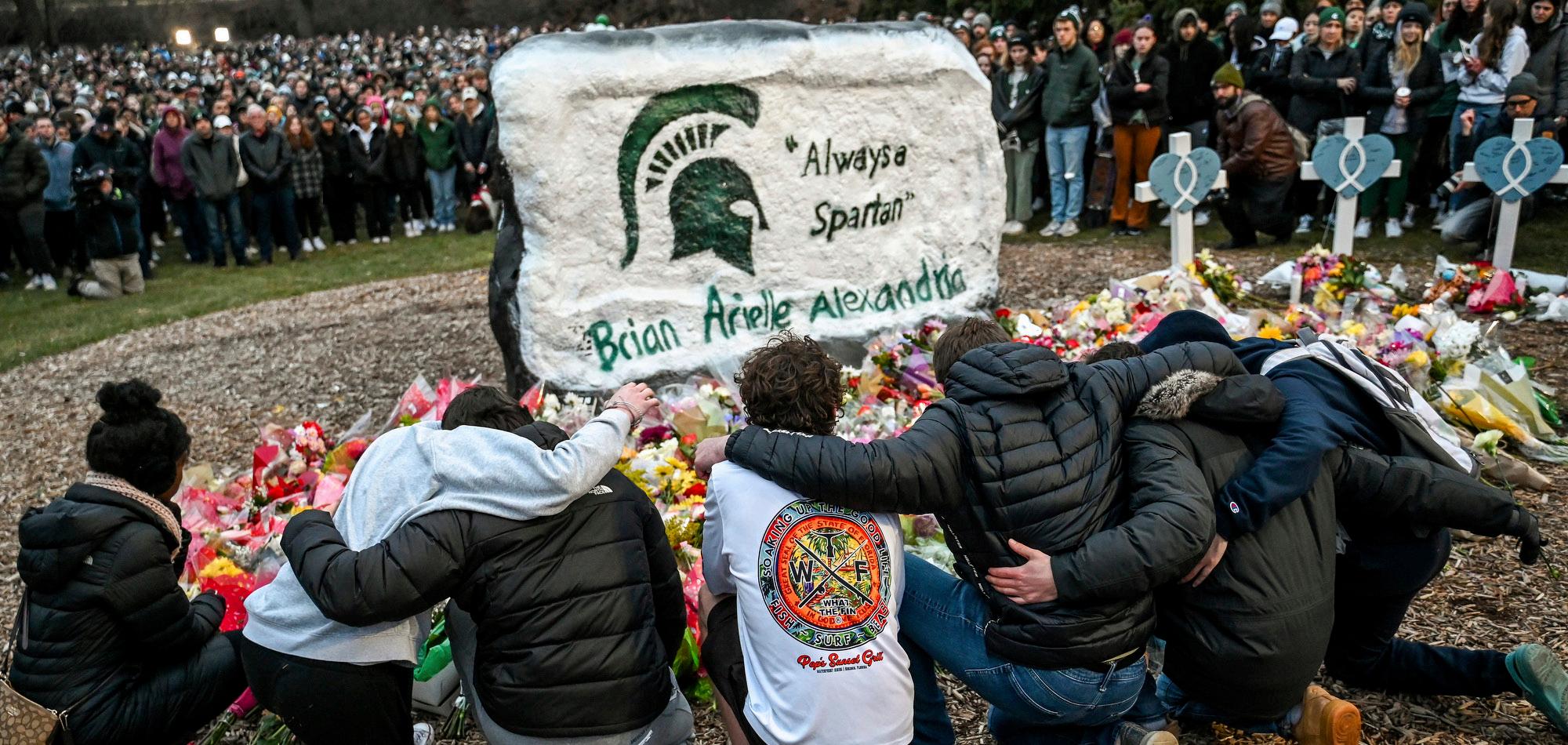
“Be vulnerable. Don’t be afraid,” he said.
In ancient Greece, Spartans were legendary warriors, known for a collective toughness, accomplished only through their unwavering unity. As I look through photos of those in my hometown coming together in support of one another, it’s obvious how fitting the symbol of Spartan helmet is for a group of people exemplifying support and community.

I used to think toughness and vulnerability were on the opposite ends of the human spectrum. This week has taught me that’s not true. There’s a toughness in being vulnerable. Armor is heavy, and it takes courage to shed it so others can better hold you up.
Our country’s violent reality and relationship with guns won’t change any time soon. We’re going to keep going through this, and communities everywhere will have to come together, be vulnerable and support each other in order to heal.
Just as it is in building ourselves back up, I think togetherness is also the foundation for change.
There’s a well-known battle cry at MSU sporting events, in which one side of the stadium or arena will yell “Go Green!” in unity and the other side will respond “Go White!” It’ll give you goosebumps to hear and feel the unison of 80,000 people shaking the cement floor of Spartan Stadium with nothing but collective, raw, human desire.
This week, my perception of “home” has fundamentally changed. It’s long been a Mmidwestern college town, but now, it’s a little more abstract. As I walked down State Street in an MSU hoodie the other day and heard a “Go Green!” my reflexive response of “Go White!” made me realize “home” is people just as much as a place.
Like others, I desperately want change. I want sweeping gun reform. I want an effort from lawmakers to do something substantial.
I don’t know exactly how that can happen, but I do know that if change does finally come, it’ll be because people came together in the same way MSU was forced to last week. It will be for the sake of a larger, collectively shared abstract “home.” It will happen through community.
Read about the vigil held in Chicago for the victims of the shooting at Michigan State University on page 11.PATRICK SLOAN- TURNER I THE DEPAULIA Friends of Brian Fraser gather around The Rock on the campus of Michigan State University, in East Lansing, Mich., on Wednesday, Feb. 15, 2023, during a vigil honoring MSU shooting victim.
Closing the literacy Focus
By A lex A BA nuelosWith colorful street art and a myriad of books lining the walls, the Semicolon Bookstore and Gallery strives to offer an immersive and experiential environment for everyone to enjoy.
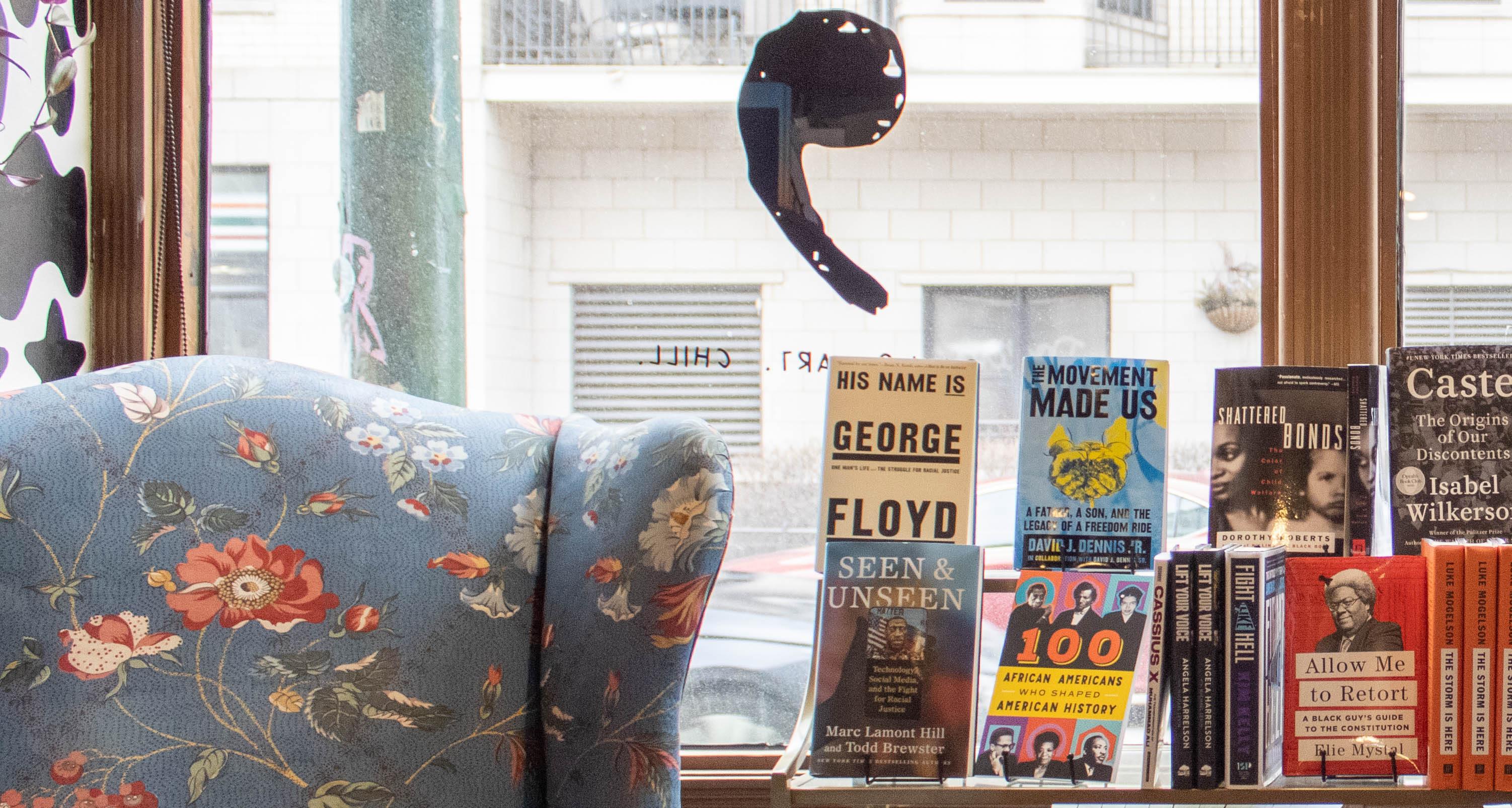
The store, located in West Town, is a Black woman-owned bookstore and gallery space founded by Daniela Mullen in July 2019. Mullen’s community-oriented efforts and accomplishments attest to a growing field of women of color becoming business owners in the United States.
“According to the World Economic Forum,’three times more Black or African American entrepreneurs also started businesses. This share has tripled from 3% in 2019 to 9% in 2021,’” said Alyssa Westring, DePaul management and entrepreneurship
SemicoloncultivatesBookstorerepresentation
Professor.
Mullen originally opened the store with the intention of creating a local environment that makes literature and art easily accessible to everyone.
The store celebrated National Black Literacy Day on Feb. 14, a holiday the store created in collaboration with their nonprofit program Parenthesis, to raise awareness toward the literacy disparities in underserved communities as they continue to close the literacy gap.
“The whole goal of the bookstore is to bridge the literacy gap specifically in Chicago but obviously everywhere,” Madonia said.
The literacy gap includes the difficulties that children and adults may experience as it
pertains to the comprehension of text. Disproportionate access to books and educational resources in low income communities of color can often be a driving factor for the literacy gap. According to The Barbara Bush Foundation For Family Literacy, 54% of adult Americans between the ages of 16 and 74 lack proficiency in literacy.
Along with the bookstore’s efforts to close the literacy gap is a drive for creating a space that offers knowledge and culture representative of people of color to all the communities in Chicago.
“Semicolon’s main mission is to provide a sort of fount of knowledge and culture that is specifically focused on POC authors and POC women authors to the general community,” said Semicolon Bookstore employee Joshua Miles Manigault. “To offer another center of Black culture to Chicago at large.”
Mullen wove the bookstore’s goal to continuously promote literacy and create a culturally immersive space for all communities into every aspect of the bookstore, including the name itself.
“Semicolon is an element that is used to let a particular thought or phrase continue where it could have stopped, and that is exactly what she intends to do with this brand,” Manigault said.
The store continuously evokes various initiatives to promote literacy and the representation of marginalized identities.
In line with those various initiatives, Parenthesis and National Black Literacy Day have allowed the store to promote and host events called #ClearTheShelves. The event is specifically curated to provide children from underserved communities with books. Through the nonprofit program, the bookstore collects donations and directs funds for CPS students.
“Basically, kind of like scholastic book fairs for CPS students, but it is free, so kids can come in and take whatever book they want,” Madonia said. “We go to them, we hold events like that here, so everything we do is with that goal in mind of bridging the literacy gap.”
While the store features a wide range of authors, maintaining black authors and women of color at the forefront of the space is an integral aspect of the store’s efforts to nurture the representation for marginalized identities and voices.
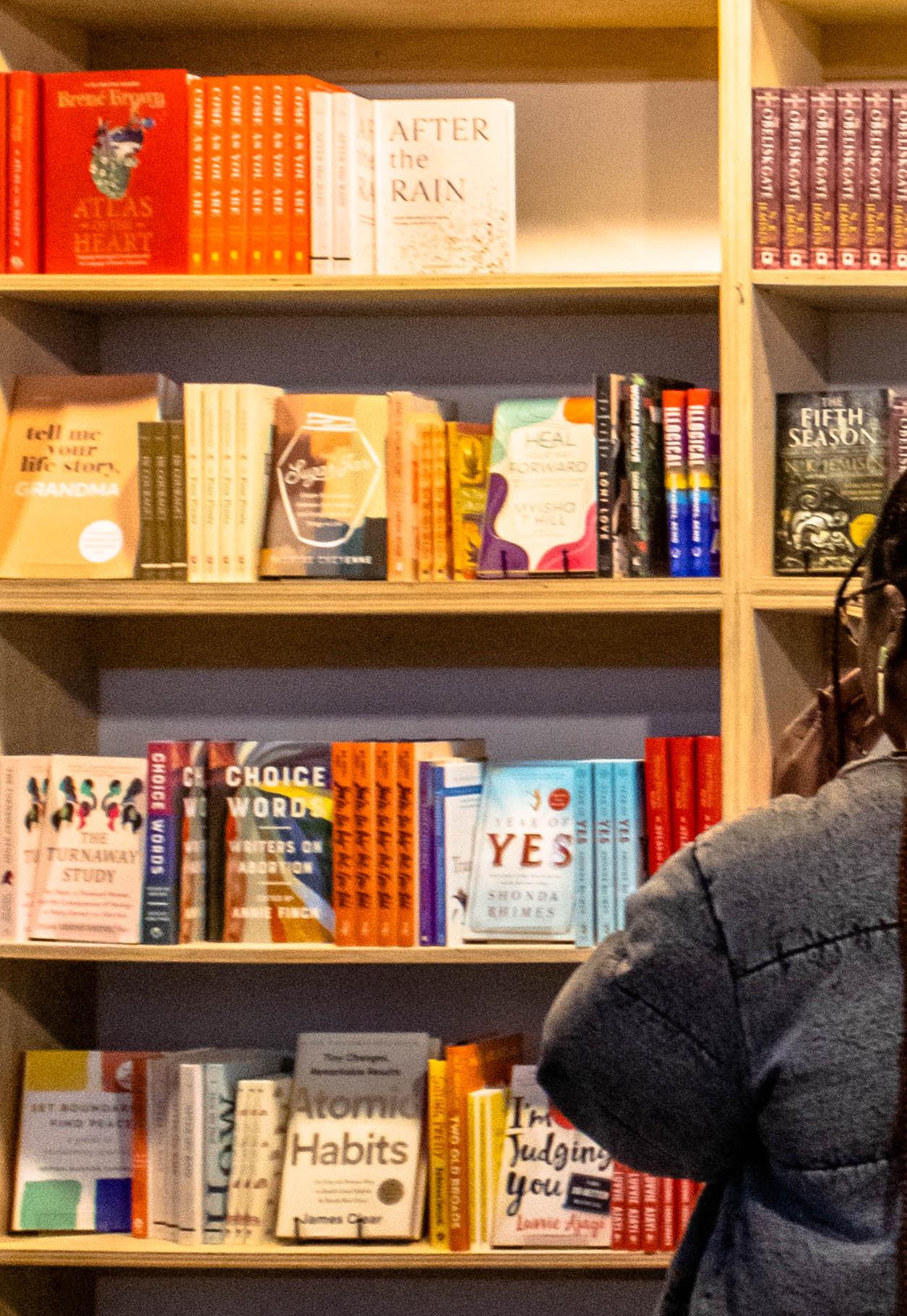
“Usually 75% to 85% of our stock is all authors of color,” Madonia said. “We carry a lot of women, we carry a lot of black writers, but all kinds of POC authors, so the bulk of our store at all times is writers of color.”
The authors featured in the store range from Jessica George, Toni Morrison, Kei Miller and a plethora of other illustrious writers. The Semicolon Bookstore seeks to emphasize
Joshua Miles Manigault Semicolon Bookstore employeethe importance of integrating narratives from people of color through the promotion of art and literacy.
“There is a good amount of self-discovery that comes from it,” Manigault said. “To be able to have that type of outlet emotional, physical, even spiritual, I think is a necessary part of maturity.”
As the Semicolon Bookstore strives to offer a culturally and educationally enriching space for the city of Chicago, they simultaneously invest in a future dedicated to making literacy accessible to all and fostering an appreciation for the voices of people of color.

”Semicolon’s main mission is to provide a fount of knowledge and culture that is specifically focused on POC women authors to the general community,”
literacy gap
Bookstore and representationGallery

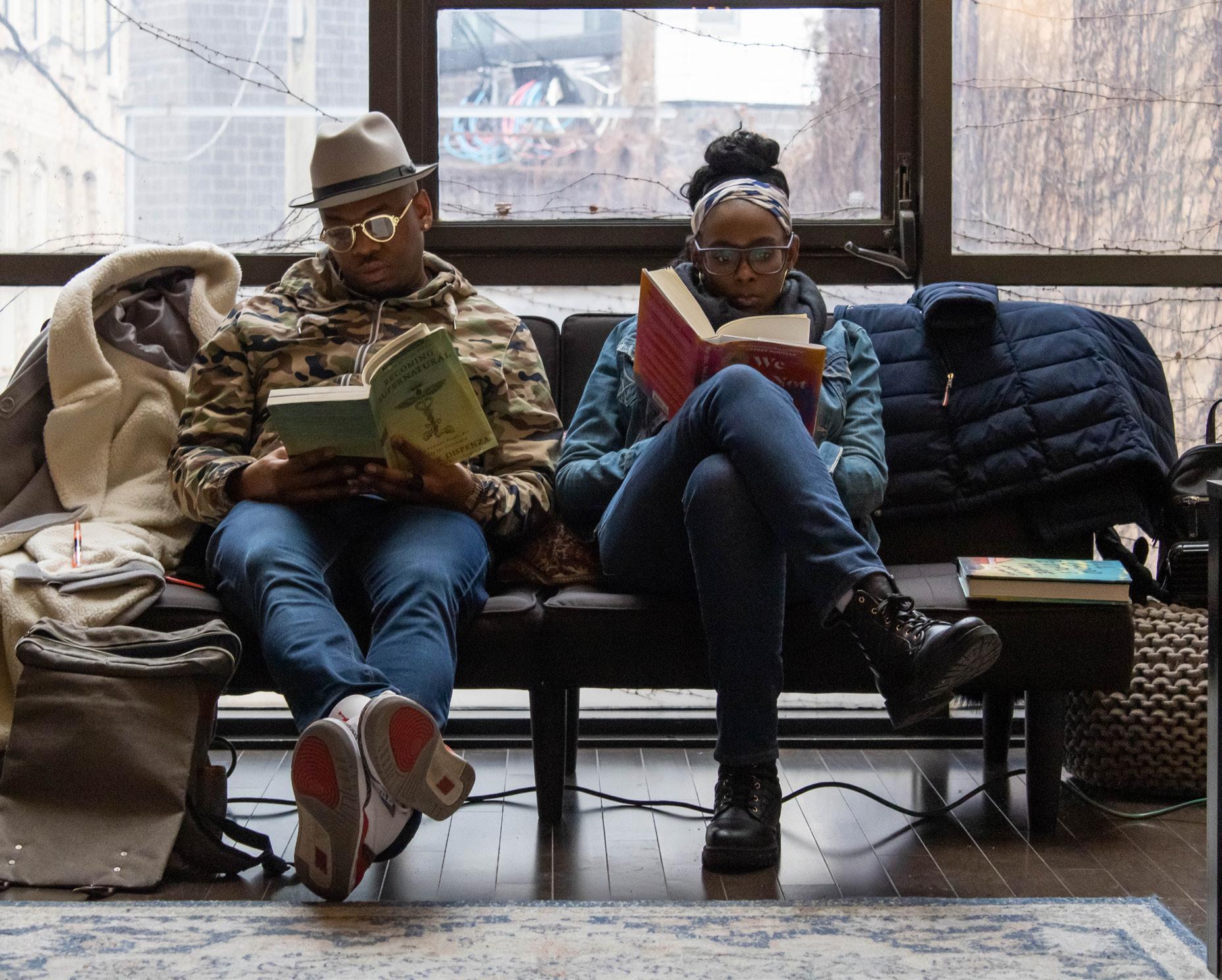
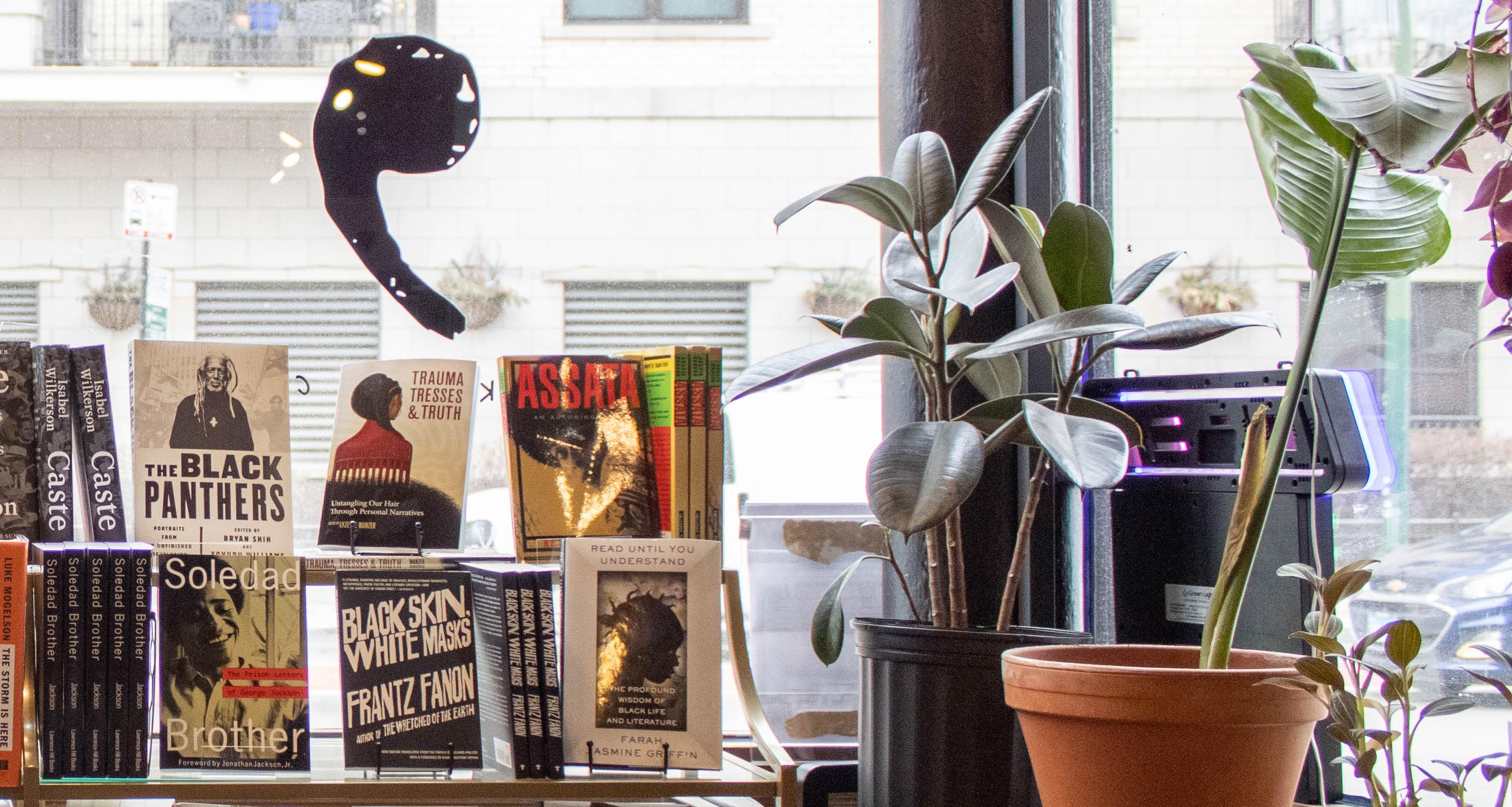



La DePaulia
Legisladoras
Cuatro legisladores de Illinois hablaron con estudiantes de DePaul, el pasado jueves 16 de febrero, sobre el tema de empoderarse políticamente siendo mujeres de color que trabajan en política.

Los estudiantes llenaron una sala de conferencias de McGowan South, ansiosos por escuchar las palabras de la congresista estadounidense Delia Ramírez, la Representante Estatal Lakesia Collins, la Comisionada de Cook County Josina Morita, y la Representante Estatal Lilian Jiménez.

Los asistentes recibieron una cálida bienvenida de Valerie Johnson, rectora asociada interina de Diversity, Equity and Inclusion (DEI).
“Bienvenidos a ‘Mujeres de color que surgen empoderarse políticamente’”, dijo Johnson.
Jesse Mumm, un profesor de estudios latinoamericanos y latinos en DePaul, presentó a las legisladoras destacando los hitos que las panelistas han forjado en la política de Chicago.
“Esta es una desviación en la historia política de la ciudad y de este país”, dijo Mumm. “En solo los últimos cinco años, más mujeres de color han ascendido de organizaciones y movimientos de base a cargos electos que nunca antes en la historia de los EE. UU., y en ninguna parte se puede ver esto mejor que en el panorama político de Chicago”.
Las palabras de Mumm fueron impactantes para muchos de los miembros de la audiencia. Ante los estudiantes estuvo la recién elegida Ramírez, la primera mujer latina en representar a Illinois en el Congreso.
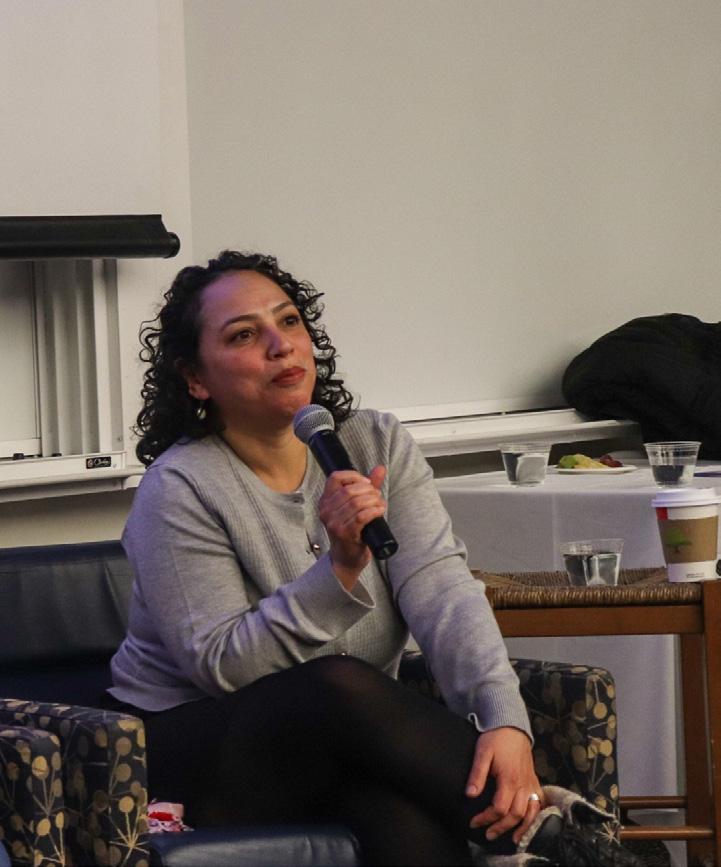
“Mi nombre es Delia Ramírez”, dijo. “Soy la congresista del 3er Distrito, y todavía se me pone la piel chinita cuando lo digo”.
Gritos de celebración estallaron entre la audiencia.
Ramírez fue electa al Congreso en las elecciones a mitad de periodo del 2022. Habló con franqueza sobre su experiencia incursionando en la política
electoral.
“Hay una razón por la que soy la primera latina en el Congreso del Medio Oeste”, dijo Ramírez. “No está diseñado para nosotros, pero hay personas que te acompañan en cada esquina… y nos recuerda que hemos hecho un gran trabajo”.
Aunque los legisladores pintaron el camino para estar en el cargo como algo solitario, los cuatro estuvieron de acuerdo en que el viaje vale la pena.
“No siempre tuve mucha confianza en el gobierno… pero poco a poco, ver a las personas no solo asumir estos roles, sino tener un impacto real… eso es lo que me inspira” dijo Jiménez.
Jiménez, quien fue alumna de DePaul, triunfó sobre la reciente victoria legislativa de Ramírez con respecto al seguro médico para inmigrantes mayores.
“[Recibí] llamadas telefónicas de personas que lloraban de felicidad. Puedes verte a ti misma en ese momento y decir ‘no soy menos que, soy igual y puedo ser más que’”, dijo Jiménez.
En el panel del jueves también participó Josina Morita, la comisionada de Cook County en representación del 13ro Distrito.
“Pasé gran parte de mi vida trabajando en temas de justicia racial”, dijo Morita. “Viniendo de California, donde tener asiático-americanos en la política era ‘normal’, [y luego] viniendo aquí y estando en Springfield preguntándome ’¿por qué estamos tratando de convencer a las personas que no se preocupan por nosotros para que se preocupen por nosotros?’”
Morita enfatizó el valor de tener representación en la política.
“Estás en la mesa o en el menú”, dijo. “Sin asiático-americanos en Springfield, sin asiático-americanos en el consejo de la ciudad, sin asiático-americanos en la junta del condado, era justo el momento. Fue entonces cuando decidí correr”.
Collins, quien representa a los 9no Distrito en la Casa en Illinois, hizo eco
de este sentimiento.
“Aparecemos de manera diferente [en la política] porque lo somos”, dijo Collins. “Somos accesibles, somos auténticos, somos transparentes y somos conectores”.
Después de la discusión, los estudiantes inundaron el frente de la sala con la esperanza de poder hablar uno a uno con los legisladores y su personal.
Los asistentes iban desde estudiantes de sociología de primer año hasta profesores de ciencias políticas.
Rebeca Acosta, una estudiante de sociología de primer año, asistió al evento a pedido de su profesor del curso “Construyendo Comunidades Latinas”. Al igual que el resto de la audiencia, Acosta quedó cautivada por la discusión.
“Vine [a este evento] porque es algo que me importa mucho. Escuchando acerca de la representación no solo de los funcionarios electos, sino también de los funcionarios electos que tuvieron que luchar-y-clavar para llegar a donde están y romper las barreras, es inspirador para mí”, dijo John Kaiser, un estudiante de segundo año de ciencias políticas.
Al igual que los otros estudiantes que hacían fila para hacer preguntas a los legisladores, Kaiser sintió el evento
Las representantes Lakesia Collins, a la izquierda, y Lilian Jiménez, a la derecha, fueron algunas de las invitadas al panel
“Lo que me llevé de esto es ser fiel a ti mismo, no te avergüences de dónde vienes. Esté dispuesto a ser auténticamente usted mismo”, dijo Kaiser.
discuten empoderamiento político como mujeres de diversas raícesLINNEA CHENG | THE DEPAULIA
‘No te avergüences de dónde vivienes:’
OPINIÓN: Los idiomas nativos mueren en los Estados Unidos
By Cary Robbins & Santiago Tijerina Gonzalez Editora de Noticias y Editor de Deportes, La DePauliaIsaías Ponpa, estudiante de último año de DePaul, creció hablando español, pero cuando comenzó la escuela primaria, lo obligaron a tomar clases de inglés como segundo idioma (ESL). Pronto se dio cuenta de que el inglés era el único idioma que sus maestros querían que aprendiera y con el cual se comunicará.
“Es como si alguien estuviera tratando de quitarte tu identidad”, dijo Ponpa.
Durante los siglos 18, 19 y principios del siglo 20, las escuelas estadounidenses enseñaban en varios idiomas, e incluso el gobierno imprimía documentos formales en idiomas distintos al inglés, dependiendo de la población inmigrante que asistía a esas instituciones, según el capítulo uno del libro de Sandra Del Valle “Language Rights and the Law in the United States: Find our Voices.”
El gobierno de los Estados Unidos ha asesinado idiomas en este país, forzando a la gente a aprender inglés y quitándoles la habilidad de usar otro idioma.
Aunque los Estados Unidos no tienen una ley federal donde se declare el inglés como idioma oficial del país, 30 estados han declarado el inglés como su único idioma oficial.
“Lamentablemente, incluso con la cantidad de inmigrantes que tenemos de América Latina, la mayoría del español, considerando la tradición de los idiomas, están muriendo en los Estados Unidos”, dijo Lourdes Torres, sociolingüista y profesora de estudios latinoamericanos en DePaul.
Cuando ella era estudiante, sus maestros también le decían que no hablara español, posicionando el lenguaje español como inferior al inglés, dijo Torres.
Al ir creciendo, Torres dejó de hablar español por completo, a menos que estuviera hablando con sus padres.
Ella dijo que sus maestros la habían hecho sentirse avergonzada de su idioma y no fue
hasta
que ingresó a la secundaria que comenzó a reactivarse y encontrar empoderamiento en su idioma natal.
Históricamente, Estados Unidos ha obligado a las personas a hablar inglés comenzando con las poblaciones indígenas.
El Congreso de los Estados Unidos autorizó el establecimiento del primer internado indio fuera de la reserva en 1879, en Pensilvania. Estos internados obligaron a los niños indios americanos a aprender inglés, rasurarse la cabeza, deshacerse de su ropa tradicional y adaptarse a la cultura anglosajona.
En una investigación sobre los internados, se reveló que los niños sufrieron abusos físicos y emocionales, y más de 500 niños murieron en los internados según la Revista Time.
Lisa Poirier, profesora de religiones de los nativos americanos en DePaul, reconoce este acto como un genocidio cultural.
“Las lenguas indígenas... no vinieron aquí para morir”, dijo Poirier. “Han estado aquí y han sido asesinadas”.
Los niños pasaban años lejos de sus familias, solo para volver a casa y no poder comunicarse con su familia ni con sus seres queridos. Sin su idioma, la comunicación, la familia y la historia se perdieron.
“Su comunidad depende del idioma que hablen porque construyen una comunidad en ese idioma”, dijo Porier. “Si has perdido tu idioma ancestral, ¿cómo construyes una comunidad dentro de ese grupo lingüístico?”.
Torres cree que se debe hablar más de este tema porque la gente no entiende los efectos generacionales que esto ha tenido y sigue teniendo en las familias inmigrantes.
“Es traumatizante hacer que las personas sientan que su idioma materno es inferior, o un déficit, ” dijo Torres.
Por su parte, Ponpa habla español en
casa, pero aprendió inglés en la escuela a través de sus clases de ESL.
Él dijo que le gustaría enseñar el lenguaje español a sus hijos, de lo contrario se sentiría como un mal padre si no lo hiciera, dijo. Sin embargo, entiende la razón por la que los padres querrían que sus hijos hablaran en inglés al emigrar a este país y lo difícil que es continuar con el bilingüismo.
Durante sus años de secundaria y preparatoria, los maestros le decían que no hablara español mientras estaba en la escuela. Ponpa decidió ir contra ellos. Entendió que el inglés era el idioma que necesitaba para tener éxito en este país.
Pero considero que ser bilingüe era una forma de abogar por sus padres quienes sólo hablan español.
“Es un arma de doble filo porque puedes ser ese defensor de tus padres”, dijo Ponpa, “pero al mismo tiempo, te pones en situaciones por las que otros niños que solo hablan inglés no tendrían que pasar”.
Torres alienta a los estadounidenses a comprender la necesidad de una educación bilingüe. Considera que Estados Unidos solo impulsaría el bilingüismo si beneficiará al país. Por ejemplo, cuando envió oficiales
del Cuerpo Aéreo del Ejército a Puerto Rico para aprender español durante la Segunda Guerra Mundial.
Torres desea que Estados Unidos vea el valor de crear acceso a programas de educación bilingüe, en lugar de solo incorporar la educación bilingüe desde un lugar de miedo.
“Nuestros deseos y nuestro impulso por los idiomas son siempre desde este tipo de perspectiva que estamos siendo atacados”, dijo Torres. “Tenemos que saber de qué hablan las personas que nos atacan”.
Torres espera ver un cambio en los estados que declaran el inglés como su idioma oficial.
“Me gustaría trabajar con otras personas que se comprometan a asegurarnos de que cambiemos eso para que [este país] ya no sea un cementerio donde otros idiomas vienen a morir”, dijo Torres.

Y que sea “un espacio donde se fomentan y apoyan otros idiomas, hay que apoyar el desarrollo del idioma, parte del proceso es no tener una retórica negativa tan mala y hacer que parezca que los otros idiomas son el enemigo”.
Entrevista: Una DJ latina expresa diversas culturas a través de su música
Por Frankie Perez y Santiago Posada-Jaramillo Editor deMientras las luces del escenario brillan a través de las pantallas con imágenes vibrantes, la audiencia estalla de emoción y entusiasmo cuando DJ Miriam comienza a tocar.

Ella se convirtió en una de las principales mujeres DJ de Chicago con sus shows desde que tocó en el tour “Sorry Papi” y el festival de música “Sueños” en Grant Park el verano pasado.
Para Miriam Paz, 31 años, ser parte de Sueños fue un gran acontecimiento debido a que el festival es ahora un evento anual de género urbano en la ciudad, que celebra el talento y la cultura latina.
“Ser la única artista local, mujer y guatemalteca estadounidense, representando una ciudad tan variada como Chicago, es el mayor honor”, dijo Miriam.
Miriam se enamoró de la música desde que era muy joven y dice que la música siempre ha estado incrustada en su alma.
Ya que es una industria dominada por hombres, a Miriam le resultó difícil darse a conocer, sin embargo, encontró una manera de superarlo y presentar su identidad única a través de sus conciertos llenos de vida.
También dijo que cualquiera puede tener éxito en la industria siempre y cuando “[seas] tú misma y te mantienes fiel a ello.”
“Cada persona tiene una identidad única, y eso es lo que te hace ser tú. Hay
una audiencia para todos; mantente fiel a ti misma, y el resto se arreglará solo,” dijo DJ Miriam. “Ese es el mejor consejo que podría dar a cualquier otra artista futura o aspirante”.
La ciudad de Chicago, podría ser fácilmente eclipsada por otras ciudades importantes con residentes latinos en Estados Unidos como Miami, Nueva York, Los Ángeles, y por eso a DJ Miriam le enorgullecen sus raíces guatemalteco-estadounidense al ser parte de un movimiento el cual saca a relucir la cultura latina a través de la música.
A DJ Miriam le resulta emocionante crear música con sonidos que encuentra de nuevos artistas latinos o diferentes géneros cuando está en el escenario. Presentar música nueva a la audiencia y a diferentes culturas es lo que más le entusiasma. Definitivamente puedes sentir la emoción a través de sus shows entre la multitud, lo que te hace sentir curiosidad por el tipo de música que está tocando y aprender sobre nuevos artistas o géneros de los que quizás no se haya oído hablar antes.
“Me encanta interpretar a diferentes artistas de todas las partes de América Latina. Me intriga mucho cómo un artista colombiano, argentino, o mexicano se expresa a través de la canción”, ella dijo.
Ser una DJ latina ha sido parte esencial de sus shows por ser bilingüe y poder entender la música que está tocando en ambos idiomas. Miriam
busca estar un paso adelante de la escena musical, al buscar artistas sin importar cuán grandes sean y sumarlos a sus conciertos.
“Priorizo la búsqueda de nuevos artistas y géneros latinos, y cuando me encuentro con alguien nuevo y genial, es la sensación más emocionante. No puedo esperar a tocar su música con la esperanza de que a la audiencia les guste tanto como a mí”, dijo ella.
DJ Miriam se está abriendo camino en la industria de la música como una DJ latina con un estilo único el cual la hace destacar.
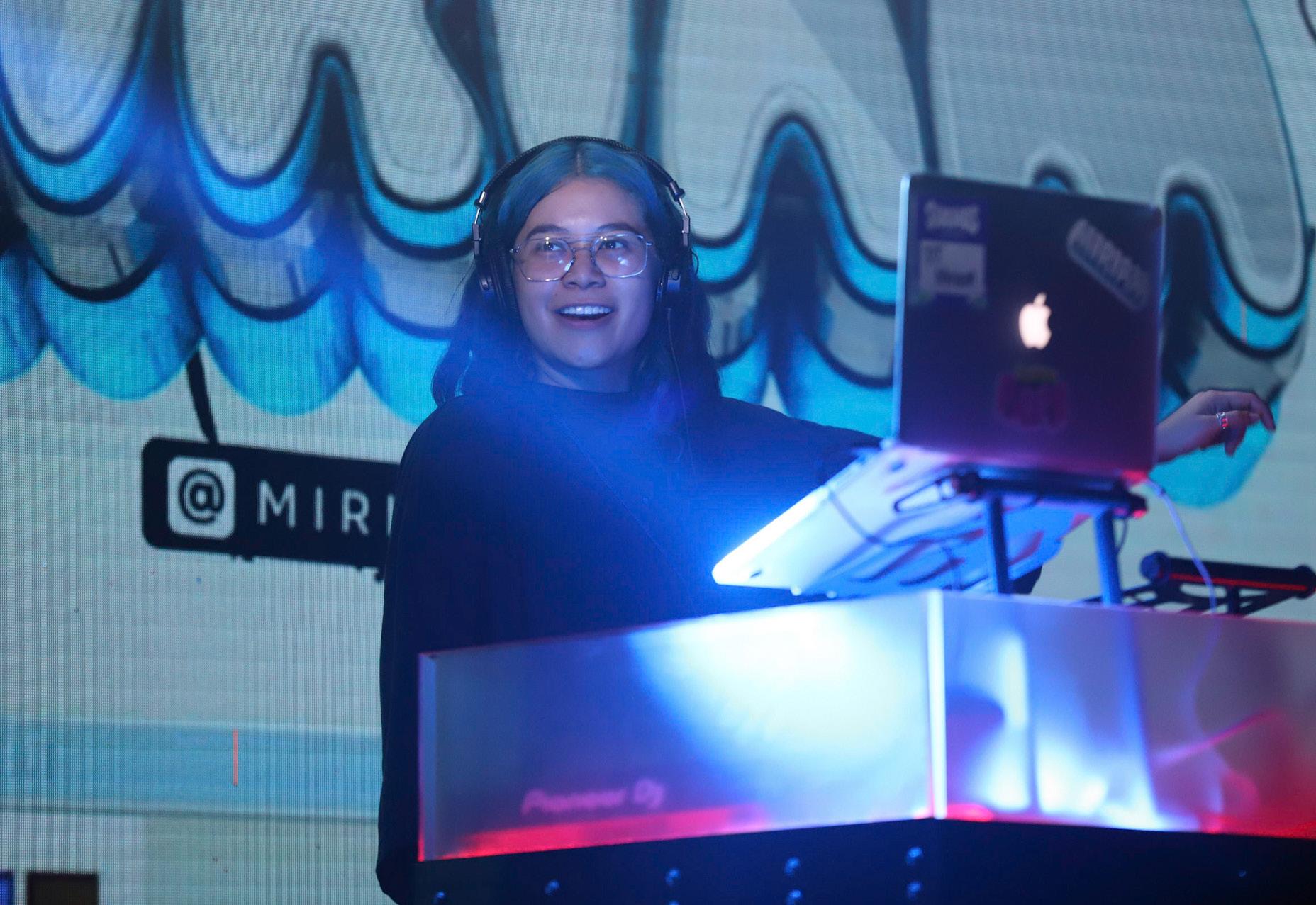
Arts & Life
Coloring Chicago
Blue Man Group: The enigmatic, authentic, unicorn group in their own words

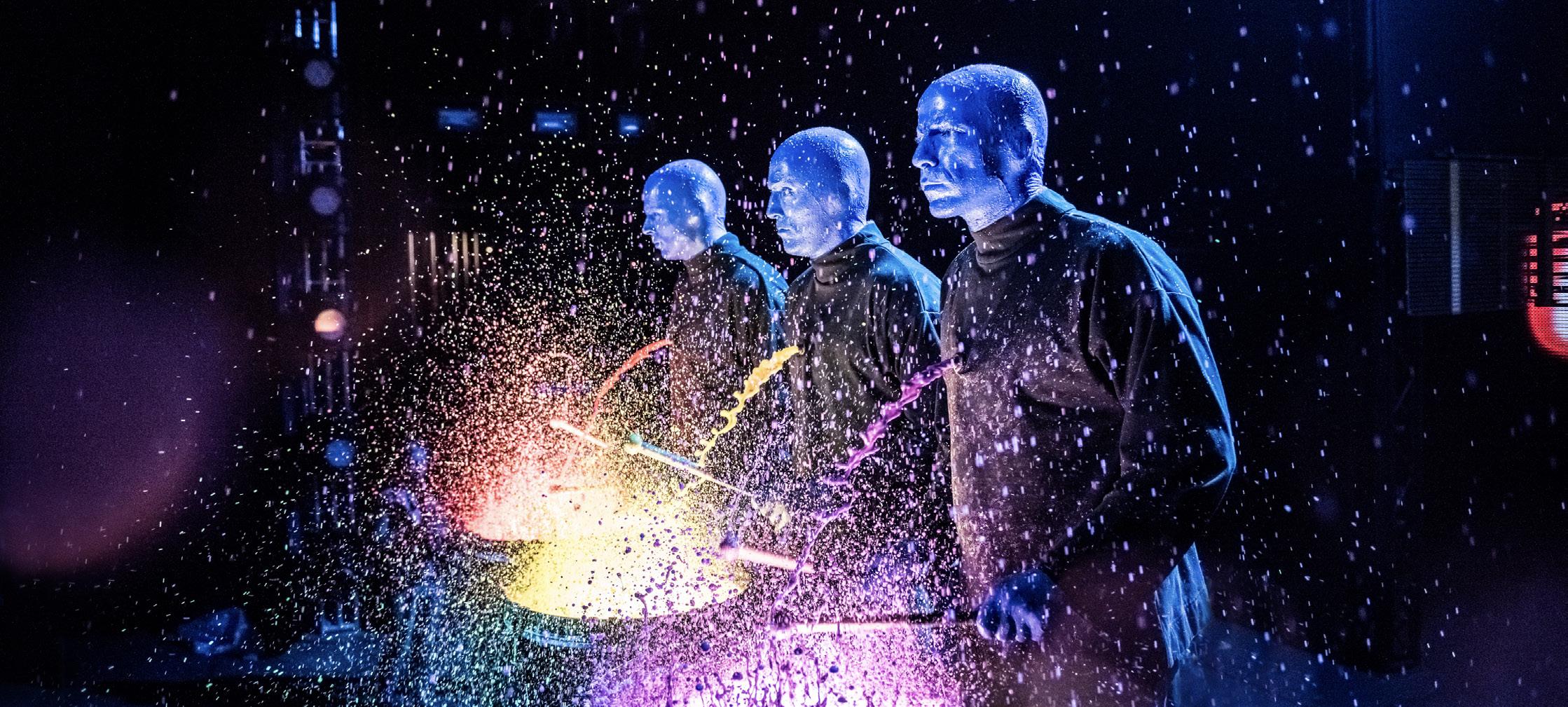
From their wide-awake eyes, to their strong brow arch, to their deep blue skin, the blue men of Blue Man Group are instantly recognizable.
What makes a blue man beyond the blue paint, however, is a bit of an enigma. The nonverbal performance is its own special kind of art. Even the performers themselves are still trying to tap into the character, but some say they enjoy the challenge.
“You can’t figure it out,” said Tom Galassi, the captain of Blue Man Group Chicago. “A lot of people can do the blue man character for so long because it’s impossible. You can’t figure it out, you can’t do it right. You have to throw yourself into it.”
Galassi was trained by the three original blue men in the late 90s and has been a blue man for 25 years. He says that trying to figure out who the character is makes the character fresh.
The magic of not being able to pin it down is part of what keeps the magic of Blue Man Group alive.
Brett Presson, the production stage manager of Blue Man Group Chicago, has been with the company for over 10 years. Doing 90-day runs of musicals and Shakespearian performances in the classic theater world was a completely different experience than Blue Man Group shows.
The show has had an unprecedented run. Blue Man Group celebrated 30 years as a company in 2021 and audiences still come in droves. According to Galassi, one audience member has even seen the show over 100 times.
“It’s a bizarre lightning-in-a-bottle phenomenon,” Presson said. “Nothing runs this long. It doesn’t make sense. There aren’t fulltime jobs in stage management, what I do. This is a unicorn job.”
pairing metronomic performance with spontaneity and improv. The technical high-level precision drumming contrasts so well with the nonverbal acting.
members file into their seats, the drums roll out and before three men paint their heads blue, the
members of the Blue Man Group are at Briar Street Theater, preparing to go silent for the 90-minute performance.
After warming up with practicing drumming routines or show segments, the group gets in the mindset of the blue man character. They may start jumping around, it may get quiet, the room can be filled with jokes and laughter, whatever it takes to prepare for the show.
“It can get crazy, the energy that we’re about to generate is a lot for all the performers; the band and the blue men,” Galassi said.
From the moment the audience walks into the theater, they know they are in for a different show.
Clap for an audience member who is an “average individual of no particular distinction,” and congratulate another for completing the “great mustache pub crawl.”
The audience is engaged from the beginning, which makes the start of the show that much more exciting.
The blue men appear on stage, moving with purpose and seriousness. They hit drums so large that the sound reverberates in your chest.
But because this is Blue Man Group, you are not just getting a precise percussion performance, you are getting a show that combines spectacle and comedy.
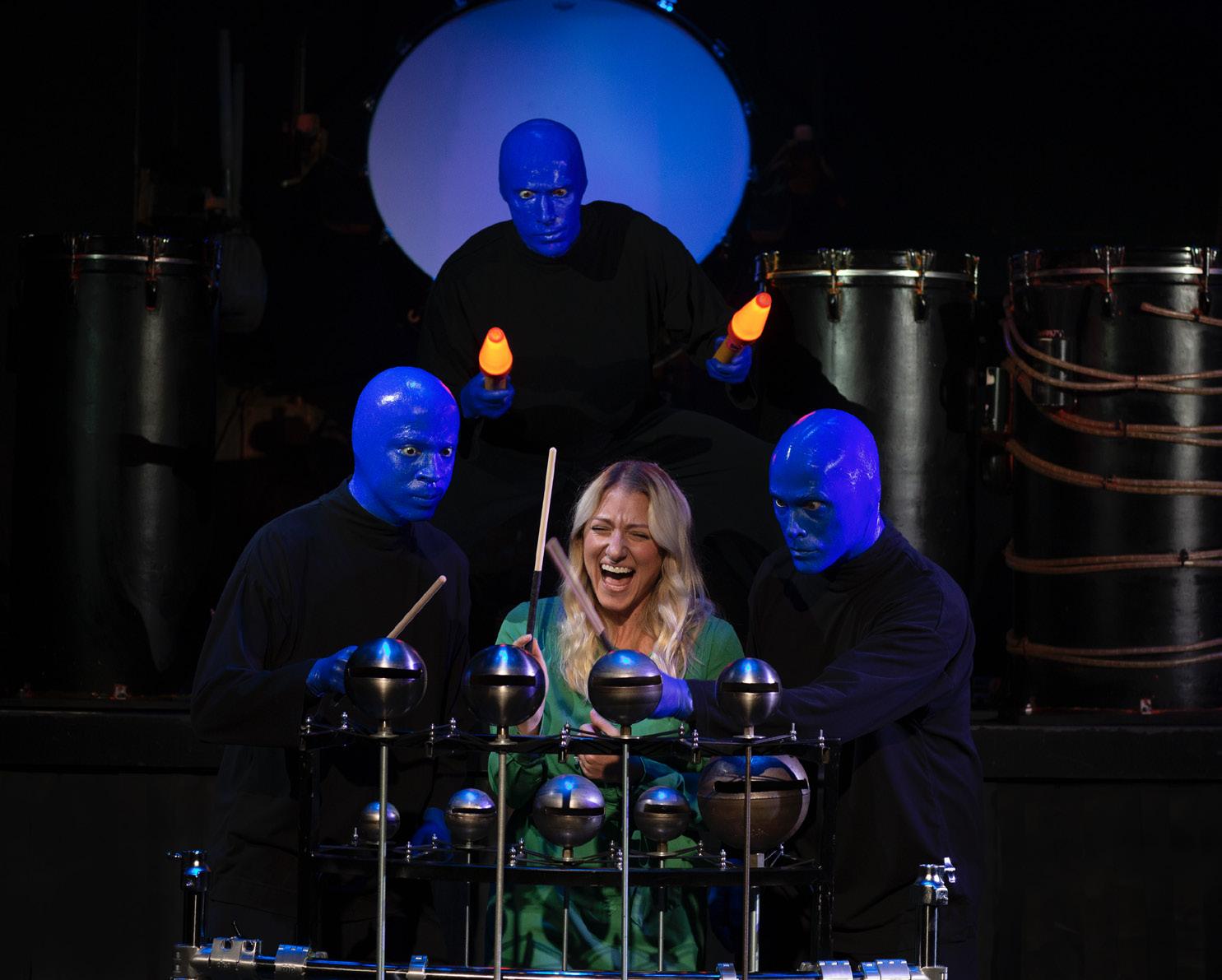
Most of all, though, the performance is
“I’m showing you, when I put [the blue mally,” Galassi said. “We’re ripping off our
The blue men are showing who they are and they want to see who you are as
ing people onstage to throwing
marshmallows into the crowd, to making intense eye contact with people and watching their reactions.
Galassi said that his favorite part is looking out into the audience because everyone engages with the show differently. He has seen people crying because they were moved, in tears laughing, scared, or even getting up and leaving because they were confused.
All of these reactions inform how the show goes. Some things are planned, while others are improvised based on the audience’s vibes.
“We have to get from A to B to C, but how we get there and how we do it is different depending on the audience,” Galassi said.
The energy from the crowd was electric with audience members on my left and right physically leaning in to watch the show. People were so excited that they could not contain themselves.
“Oh that looks so gnarly, this is going to be good,” an audience member said behind me when a giant instrument made of PVC pipes was brought out.
According to Graham McLachlan – the resident music director and band member of Blue Man Group – the show is still fresh after 30 years. He says the show is universal and does not go stale.
At the end of the show, once all of the audience members filed out, a crew took out buckets of water and hoses, spraying the paint, marshmallows and more off of the stage.
Even though the performance is technically over, the show continues. Even after 30 years, the show is still changing and evolving in the performance world.
“[We are] never actually done, which is pretty unique,” Presson said.
VETERANS, continued from front page
“Black Americans were committed to helping win the military battle in the war, but that wasn’t entirely WWII. They wanted to also win the battle in the homefront against racism.”
Until 1948, the military remained segregated, supplying most enlisted Black men to noncombat units and supervised service duties such as mess attendants, truck drivers and cargo loaders.
“One of the things I hope I make clear is that by focusing on the experience of the Black Americans in WWII, it’s not just additive,” Delmont said. “It’s not just saying, let’s also pay attention to what happened with Black Americans. It changes the chronology; it changes what the war was actually about.”
DePaul Department of History Chair Warren Schultz explained the significance of the university hosting outside speakers such as Delmont.
“One of our motivations in reestablishing this as a physical face-to-face event was to give the opportunity to get the word out there and to a wider audience,” Schultz said. “It’s exciting to hear people who know a lot and are enthused about a topic to bring their passion to you.”
Nominated by the history department faculty, Delmont’s presentation marked the annual Howard O. Lindsey Black History Month lecture series, honoring the
former DePaul professor.
“Howard O. Lindsey was a colleague in the history department who retired in 2014,” Schultz said. “At some point after his retirement, the department voted to establish any Black History Month lecture as part of the Howard O. Lindsey series. We sensed [Delmont] would be a great speaker because he is a trained and talented historian, but he’s written a book for a wider audience.”
For DePaul junior Krystal Morgan, whose mother-in-law’s grandfather and great-grandfather fought in both WWI and WWII, Delmont’s presentation hit close to home.

“This book gave me a little more detail into what he [grandfather-in-law] experienced as a soldier and why he didn’t want to talk about it,” Morgan said. “They were so disrespected and demeaned and made to feel like less of a man and less of a person.”
Yet, for Morgan, the most horrific discovery in Delmont’s presentation was the treatment of Black soldiers compared to war hostages.
“I could not believe that prisoners of war were treated better on American soil than actual Black people who fought in the war,” Morgan said.
According to TIME, it was not uncommon for Black soldiers to observe Nazi prisoners of wars receiving more respect and better care. From spacious railway cars on the train to uncontested access to restaurants, the country’s undisputed favoritism only furthered Black soldiers’ beliefs that they were fighting for
a country that would oppress them every chance it got.
For Delmont, it is why he continues to preserve the past.
“The stories we tell about the past matter,” Delmont said. “If we tell the right
stories about the war, we can finally honor the sacrifices of the black veterans, defense industry workers, and citizens who fought on foreign battlefields and their own cities and towns so that no one would ever be treated as half-American.”
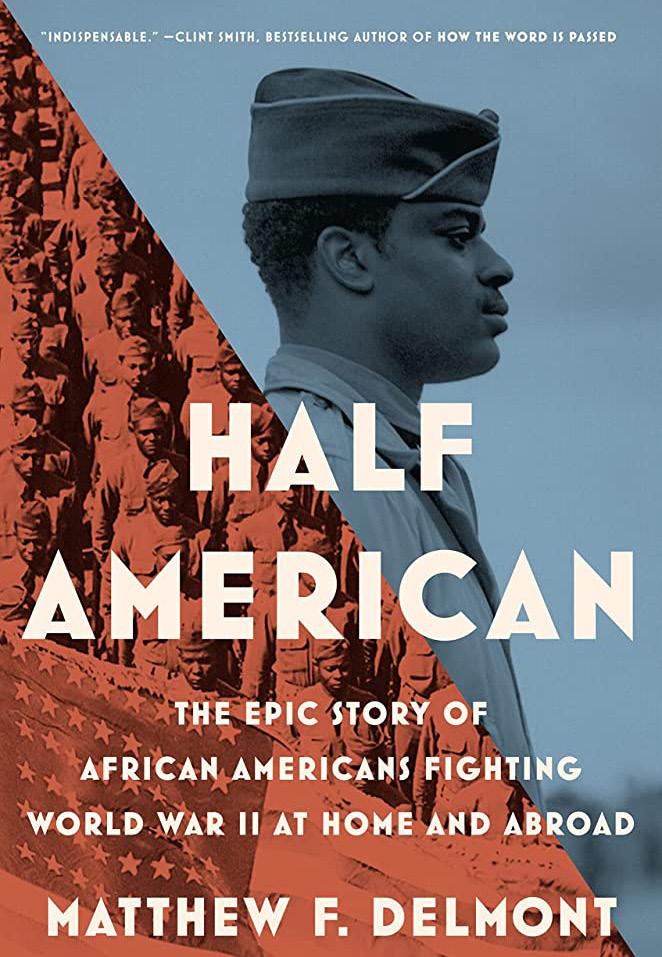
“It's not just saying, let's also pay attention to what happened with Black Americans. It changes the chronology; it changes what the war was actually about.”
Matthew Delmont Dartmouth Professor and Historian
POGUES AND KOOKS COME TO CHICAGO
By Una CLearyPouges, Kooks and treasure hunts came to Chicago this Valentine's Day in a special screening of the first episode of “Outer Banks” season three.

Winners filled the seats of AMC River East to hear cast stars Rudy Pankow (JJ) and Chase Stokes (John B.) give opening remarks with free popcorn and soda provided.
Anticipation burst into screams filled the room when the two cast stars ran in.
“Thank you, guys, for supporting this journey, thank you for being fans of OBX,” said Stokes in the episode’s introduction.
Select “Outer Banks” fans around Chicago were invited to enter a raffle to be invited to this select screening at the AMC River East theater. Many students from DePaul, Columbia College and Roosevelt University were invited to apply through Netflix Chicago invitation emails.
“I was in an online class at the time and I got the email right away and I stopped everything I was doing,” said freshman Chloe Daily. “[My roommate] came into the room and we screamed about it for about half an hour.”
Since the summer of 2021 with the release of season two, fans have been patiently awaiting a new season.
“I watched the trailer and it seems a lot more action-packed,” said Roosevelt student Hannah Fanning. “I feel like each
season it just gets more action-packed.”
It proved to be one of the most popular series among Gen-Z after winning several People’s Choice Awards in 2020 and 2021.
With a constant theme of a beachy world, a group of friends go on a treasure hunt to find gold. Set in the modern day, the show mixes teenage slang with a techless paradise featuring teenage criminals.
As season one released at the height of the pandemic, teens lived vicariously through the show's romance and adven-
ture.
“The writers do a really good job of making their dialogue a lot of how kids actually talk,” said viewer Olivia Waletzke. “They really tailor it to our generation which makes it so relatable.”
The show's second season brought in 1,160 million viewers within a month of being on Netflix, according to IndieWire.
Through TikTok trends, merchandise and worldwide press, the show is undeniably loved by Gen-Z.
“I think the creators of the show have
created friendships between characters that us as teenagers really want, especially with the summer aspect,” Dailey said. “It's created not just friendships but a family in the show.”
Many teenagers have found the characters' personalities resonate in their lives through the different characters. Each with a different storyline every character has a complex development filled with romance, death and family relationships.
For Waletzke, “Outer Banks” is more than a show, it is also a reflection of her life being played out on screen.
“I'm from Florida so this show was my life for the past few years,” Waletzke said.
Amongst friends that surf and constantly beach days, Waletzke could find herself and her friends amongst the characters.
“My friends and I were about to pinpoint ‘you’re’ so JJ and you’re so Kiara,’” Waletzke said. “We were always at the beach a lot and my friends surf. It was just the whole vibe.”
On Feb.2, Netflix released its official season 3 trailer, which picks up with the Pogues on their deserted island of “Pougelandia.” The first episode follows with a quick twist following the Pogues and Kooks storylines.
Netflix is due to release season three of Outer Banks on Feb. 23.
FARMERS FRIDGE FALLS IN
CHICAGO-MADE VENDING MACHINES
By LiLy Lowndes & Vanessa Lopez Social Media Editor & Asst. Social Media EditorFarmer’s Fridge is a vending machine — with a twist. Instead of pre-packaged goods, students can buy fresh products like salads, wraps, pasta, pudding and even hard-boiled eggs.

The fridges are open 24 hours a day, allowing for a quick, convenient and healthy option at any time of day.
It's both practical and refreshing. If someone is wary of buying perishable food from a vending machine, fear not. Just like food at a normal grocery store, each product has a "best before" date that indicates when the product will taste the best.
Most of the food is packaged in small jarlike containers, providing you with not only a fresh snack but also a reusable container. Also, if you order a meal that requires a fork or spoon, don't worry. The vending machine also provides free utensils.
We went to the fridge that is located in the corridor connecting the Richardson Library and the Schmitt Academic Center. It’s the only Farmer's Fridge on DePaul’s Lincoln Park campus.
The fridge was nearly empty by the end of the day, but we managed to snag a baja chicken wrap and a Thai noodle bowl.
The wrap was definitely better than other wraps that you buy on the go at supermarkets or coffee shops. You know the kind: under-portioned, overpriced and dry, yet you buy it anyway because you are out of options and do not have time to wait for hot food.
Don’t let the vending machine scare you away, because the wrap tasted surprisingly fresh. It was filling, the tortilla was still soft and the wrap had the right amount of sauce and chicken inside.
The noodle bowl was packaged in one of the Farmer’s Fridge jars. The jars are convenient in a pinch, but if you have access to a tra-
ditional bowl, we would recommend transferring the contents into a bigger container. The ingredients of the bowl were stacked on top of each other in layers, making it a little tricky to mix and evenly distribute.
Packaging aside, the Thai noodle bowl was very tasty. It was a smaller portion than we would normally eat, but the sesame and ginger flavoring mixed well with the medley of vegetables inside including zucchini, tomato, green peppers, carrots and red cabbage
The next morning, we were able to find berries & granola greek yogurt and chocolate chia pudding.
The pudding was creamy and could have worked as a breakfast snack or dessert. It smelled exactly like strawberry ice cream. The parfait was juicy and crunchy, with a perfect combination of flavors ranging from apples to granola.
However, the vending machine is not as inexpensive as standard vending machines. Prices are slightly higher than what college students would consider cheap.
The prices range between $5 and $11.
The fridges do provide healthier alternatives. However, with the fridge being almost completely empty, it appears that it is a hit with some students.
Because the farmer fridge is located on campus, its hours vary:
Mon-Thu: 12-2 a.m., 7:30 a.m.-11:59 p.m.
Fri: 12-2 a.m., 7:30 a.m.-9 p.m.
Sat: 10 a.m.-9 p.m.
Sun: 10 a.m.-11:59 p.m.
Farmer's Fridge products go beyond vending machines. You can order online by downloading the Farmer's Fridge app. You can also buy individual products at your local grocery stores and retailers.
If you’re hesitant to buy anything but chips and candy from a vending machine, don’t be. There are fresh quality options that you can get from the new age of vending machines.

Valentine’s Day sweetened engagement in the cultural and resource centers with the first Candygram event hosted by the Office of Multicultural Student Success (OMSS).

Sophomore Branton East, a community engagement assistant in the LGBTQIA+ Resource Center, saw new faces introduced to the spaces as students stopped by to pick up candygrams from friends and loved ones.
“It's been so nice to see fresh faces because this is a resource to students,” East said. “They should know it exists and that there is a community here waiting for them.”
The community collateral, a group of student employees within the cultural and resource centers whose main goal is to increase engagement by bringing together various programs, planned the event.

East is a member of the community collateral and said his role involved initial planning, organizing the details of the event and sending out emails to students who received a candygram.
“It's a way for people to spread the love,” East said. “It also makes people come into our centers and be exposed to these spaces.”

Students were encouraged to request a candygram through a Google Form with the option to add a personalized note and


remain anonymous. Emails were sent out to students who received a candygram to pick up on Feb. 14 in the LGBTQIA+ Resource Center, located on the third floor of the O’Connell building.
“The students just come up with the most fun ideas,” APIDA Cultural Center coordinator Sabrina Salvador said. “It was a conversation of throwing ideas at a wall, and candygrams is the one that everybody agreed on that was really interesting. I can’t really say why this is what we came up with but it's something all the students wanted to put together and work together on.”
The candygrams featured Valentine’s themed bags with a variety of candy inside, decorated with ribbons and handwritten notes put together by volunteers from the resource and cultural centers.

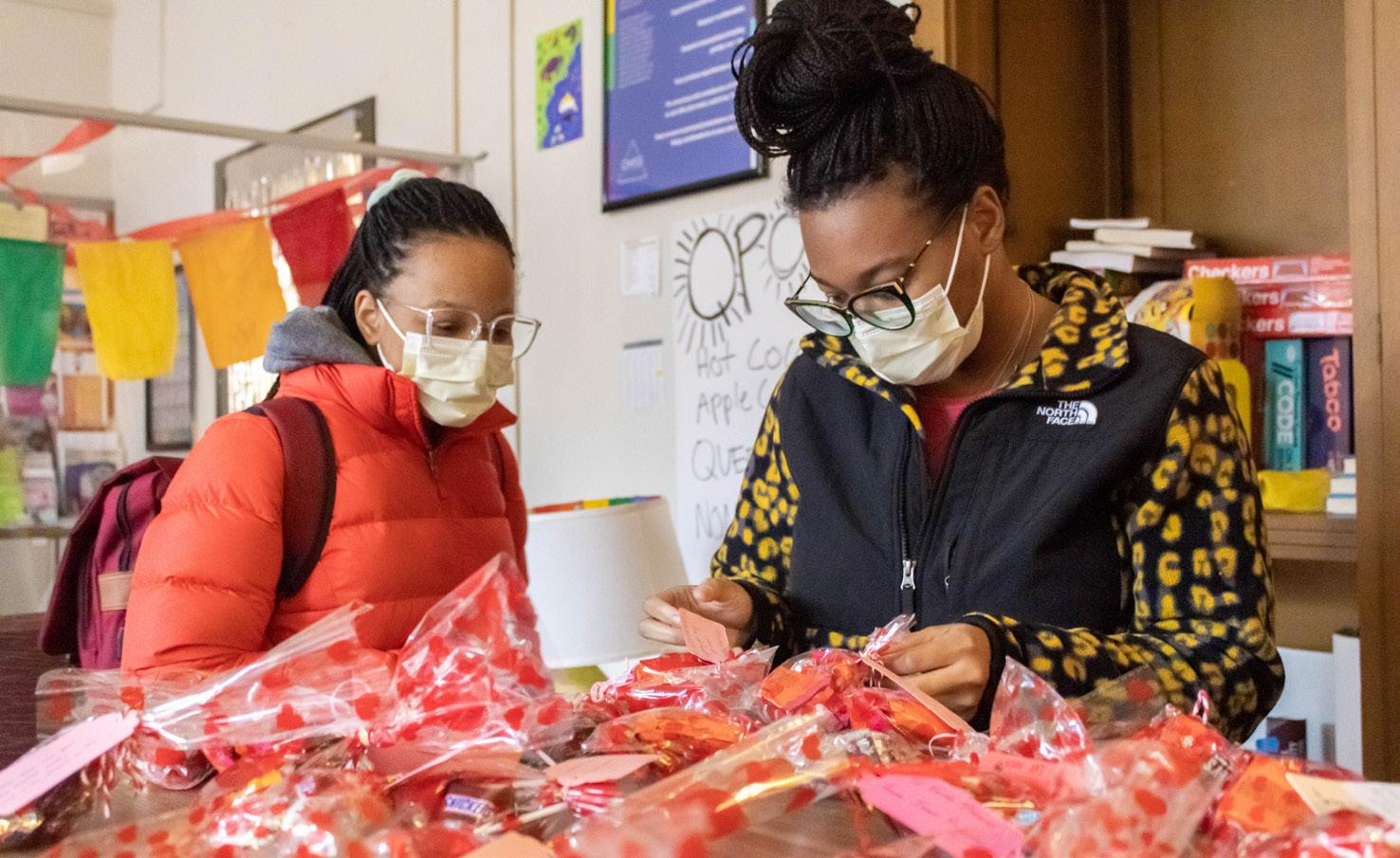
“It was a lot of fun making them,” said sophomore Marcela Erickson, a community engagement assistant in the APIDA Cultural Center. “We had just finished a staff training so a lot of us gathered in the APIDA [Cultural Center] and did it step-by-step, assigning roles to each person.”
In total, students requested and made 75 candygrams. Salvador believes the candygrams could become an annual event to help students feel more connected to not only the
centers but to each other.
“It was really fun to see what it could look like this year,” Salvador said. “It's definitely something we can explore to put together next year and hopefully more students hear about it and get involved. As an event as a whole, we should be sharing the love and sharing the awareness of our centers.”
Although they were trying to promote university-wide engagement for the centers, Erickson said it was also beneficial to bring the different groups themselves together.
“We are physically separated in terms of space but we all have the same mission and goals,” Erickson said. “We want to support our communities and I think events like the candygrams really bring us together.”
The candygram event was one of many held by the cultural and resource centers for Valentine's Day. The APIDA Cultural Center taught students how to make origami hearts with positive affirmations, and the Latinx Cultural Center held a photoshoot and speed dating event. With multiple events occuring at the same time, students and staff hoped to encourage others to vis-
it and familiarize themselves with all of the centers.
“It's about trying to connect students across all of the centers in these intersectional events,” Salvador said. “Oftentimes when we have large programs like this, the key is figuring out how to put on an activity or something that encourages students to enter each space so they interact with each other.”
There are currently no other upcoming large-scale celebrations planned by the cultural and resource centers. For students interested in exploring what the programs have to offer, Salvador encourages them to visit during activities for Black History Month hosted by the Black Cultural Center, weekly Thursday events by the APIDA Cultural Center including game nights and Chai Time, and the Gender? Discussion Group in the LGBTQIA+ Resource Center.
“At the end of the day, I think OMSS as a department is really trying to make students of color and minority students feel welcome and feel like they have a place here at DePaul, especially being a [predominantly white institution],” Erickson said.
The highs & lows of Super Bowl advertisement Where did all the stories go?


 By samUeL mroz Staff Writer
By samUeL mroz Staff Writer

Facilitator for one of the largest annual events of the year, the NFL has spent nearly six decades delivering a pinnacle of social fandom in the Super Bowl. With two teams battling it out for glory and bragging rights, a war of brand marketing is being waged in brief but crucial ad placement. Viewers tune in for the creativity seen both on and off the field.
Advertisements have long been the emotional undertone to this three hour contest of pure adrenaline. Commercial breaks - lasting three to four minutes with up to ten brands being marketed within that time- provide a tonic of brief but eventful storytelling. Hundreds of parties, and even more spectators, now place the sports world as second fiddle to the likes of endorsement culture. Brands have certainly taken notice.
Time does not come cheap in this appeal, as it is simply all or nothing for the businesses willing to participate. Modern figures clock in the ballpark of $7 million for 30 seconds of televised runtime, so ideas must be quick, expressive and ideally, impactful. For both the game and the industry at large, there was one ad that first showed what it meant to do all three.
The Macintosh - a system that turned computers from a niche commodity to a user friendly interface - needed an image to match its spectacle. Releasing the PC in 1984, Apple employed a team of creatives to roll out the product’s promotion. Ignited by the intellect of a young Steve Jobs, it was clear the Mac was going to change society. But how does one deliver such an invention?
The largest televised program available quickly became the only answer.
Using the Super Bowl to garner the
most eyes in the shortest amount of time, the minds at the advertising agency “CHIAT DAY” gave structure to a concept that would topple humanity's present norms. Up to its knees in the uncertainty of what would be the global response, the group stood idle in these vague waters. The addition of one last visionary gave them all the courage to take the full plunge.
Exemplifying what advertisements can and should be, professionals within the field say that this standard has been largely brushed away over a tarp of consumer pandering.
“It’s not what it used to be,” said Nina Abnee, a DePaul professor who specialized in client relations in advertising. “It’s babies, it’s animals and celebrities. Par

ticularly the celebrities. From my perspective, I’ve never really liked the ads that do the sensationalism for the sake of it.”
Not every ad will wield the creative backdrop that made “1984” the success that it was, but failing to pursue that image created a wave of mediocrity that degraded the industry. The craft is now less intimate and more explicit.
“I have felt that it’s gotten too average,” said Dan Azzaro, a DePaul professor who dabbled in both the economic and creative sides of the business. “You find it[modern ads] following the trends, not necessarily making the trends. Sometimes you don’t have to shout to be heard.”

An extensive mythos of brand development in years past delivered a handful
Funnies Off Jackson
of standout campaigns that thrived in their moderation. They looked at their market and responded appropriately, rather than boasting about the latest craze, or siphoning their funds into the pockets of whatever celebrity was big at the time.
In 2008, E-Trade thought up a semi self-autonomous baby that could speak fluently beyond his years, touting the ease of investing in the comfort of his highchair. This model saw a resurgence in this year’s Super Bowl, with a group of babies attending a wedding.
Less ghastly than Apple’s gray-tinged masterpiece, the two projects bore an original concept that people responded to.
“You have to think about your brand and your product and your category, and how much you play into culture,” Azzaro said. Apple, Budweiser and E-Trade checked off each box in their own way. Long held principles of the advertising industry give a clear answer at why these boxes now lie unmarked.
“Let’s find a way to deliver a message that’s fresh, memorable, relatable, relevant, and can possibly change your behavior,” said Marshall Goldman, a DePaul professor who built his career in the creative side of the trade. “Ninety-nine out of 100 of these Super Bowl ads put execution over idea and that’s completely ass-backwards.”
An ad from The Farmers dog - a petfood company -was that one out of the other ninety-nine duds for this year's game. Simple but resonant, the story of a young girl and her brown labrador effectively promoted the values of its brand, all within one minute.
A rare example within a sea of shallow promotions, The Farmer’s Dog gave an emotional indicator that good storytelling is still possible. Hopefully next year's ads will place moving ideas over a nonsense exhibition.
What’s Fresh

Anna Karenina at the Joffrey Ballet finds beauty in tragedy
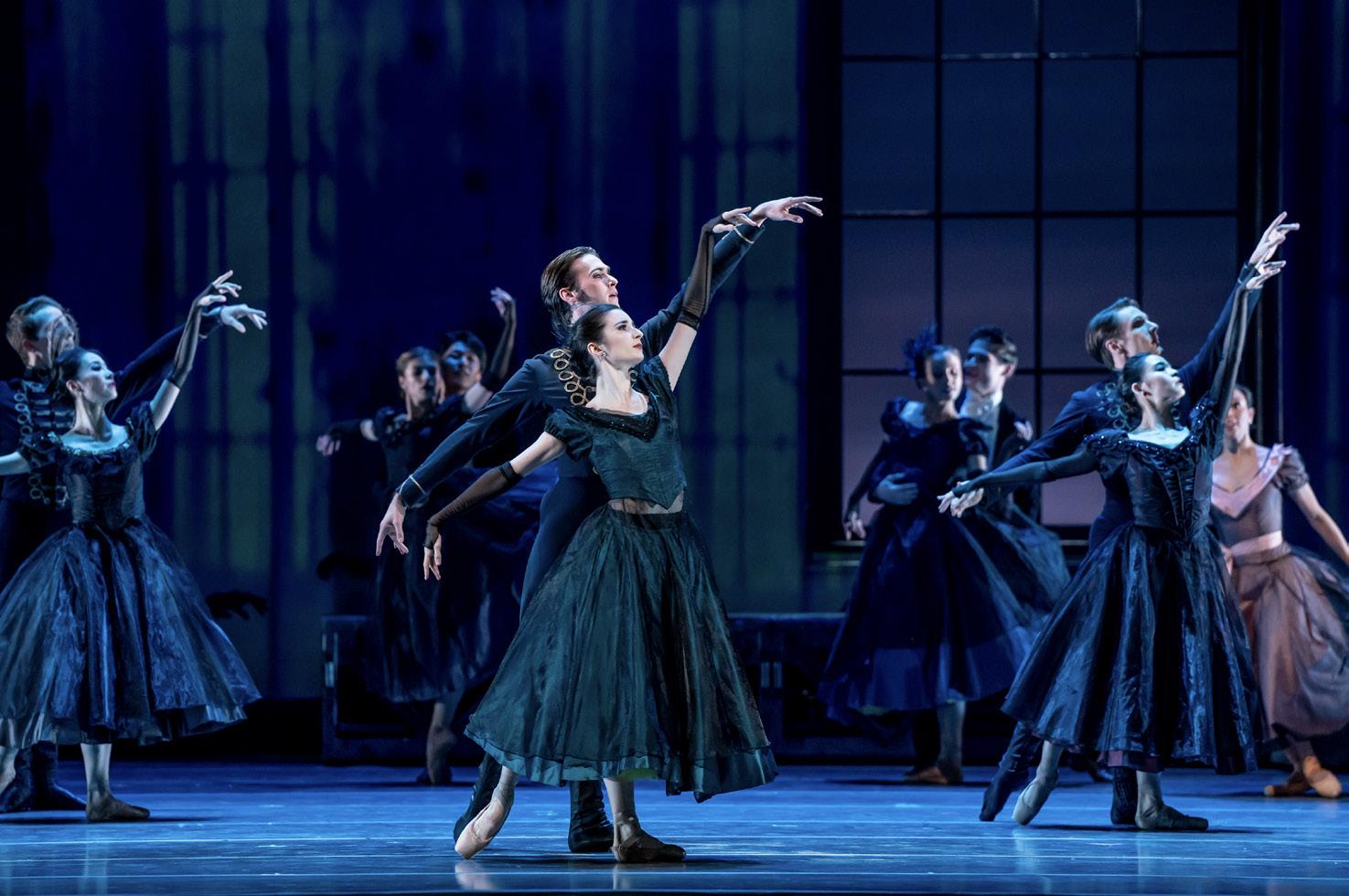
 By LaUren CoaTes Staff Writer
By LaUren CoaTes Staff Writer


When it comes to finding stories that adapt well for the stage, the ballet world has frequently turned to literature for some of its most revered works. From “Romeo & Juliet” to “Don Quixote,” the sweeping romance and epic narratives of classic literature have yielded decades’ worth of beloved ballets. For the next week, the Joffrey Ballet will play home to one such classic, Leo Tolstoy’s “Anna Karenina,” choreographed by Yuri Possokhov. In spite of unrest outside their performance hall, Joffrey delivers a stunning rendition of “Anna Karenina,” anchored by mesmerizing performances and clever production design.

“Anna Karenina” tells the tragic tale of the eponymous Anna (Jaiani), a beautiful but haunted woman swept away in a love triangle between her steadfast husband Alexey (Gutierrez) and the charismatic Count Vronsky (Velazquez). As the years go by, Anna’s life becomes a whirlwind of mystery, mysticism and romance, but the harder she falls, the closer she comes towards danger, and soon her life is entrenched in darkness.
It would be impossible, though, to review the opening night of Joffrey’s stunning ballet without first acknowledging the controversy that has surrounded the performance. Chicago’s Ukrainian community staged a protest outside the Lyric Opera on “Anna Karenina’s” opening night, taking issue with the Joffrey’s decision to feature a Russian ballet in their programming in light of the Russian invasion of Ukraine. Prior to the performance, the Joffrey lit the walls of the Lyric with a wash of yellow and blue light and played a rendition of a classical
piece by a Ukrainian composer, in addition to delivering a statement about their solidarity with the people of Ukraine and their support of the community.
When the curtain rose, though, audiences were treated to an original score by Ilya Demutsky, performed by the Lyric Orchestra and featuring intermittent operatic vocals. Demutsky’s compositions for “Anna Karenina” are grandiose and romantic, but also appropriately discordant and cacophonous, often featuring jarring brass sections and synths peppered among the more traditional romantic strings.
The score feels almost tertiary when the Joffrey’s performers are onstage, though. Velazquez, Jaiani and Gutierrez make for an electric trio. Together, they illuminate the stage with passion and tragedy, though each with their own singular presence and depth which in turn lifts the performances of their fellow dancers. Gutierrez’s intimidating stature and ramrod posture bring to life the powerful but stifled Alexey, where Velazquez’s Vronsky, a head and shoulders shorter than Gutierrez, slinks around stage with all the charm and seduction of the Vronsky in Tolstoy’s famous novel.
At the center of it all, though, is Jaiani’s Anna, whose haunted expression and spindly frame anchor the entire ballet, the mesmerizing tragedy of her performance in turn driving the feel of the production. The expressiveness of her features is rivaled only by the strength of her technique and athleticism, especially in the act two pas des trois, which is a highlight of the entire ballet and features all three leads at their most effective.
The true icing on the cake of Joffrey’s “Anna Karenina” is the production design,particularly the lighting and costuming. Costume designer Tom Pye clothes the ensemble in heavy, rich fabrics and ever-twirling skirts reminiscent
of Christian Dior’s new look silhouette. The fabric choices, especially for Anais Bueno’s flighty princess Kitty, only serve to elevate the regal majesty and grandiose romanticism of “Anna Karenina.”
The lighting design, courtesy of Chris Maravich, also brings a majesty tinged with danger and despair to the already-impressive choreography. Anna’s death scene in the finale is a stunning testament to the combined efforts of Maravich and Pye. As she throws herself in front of a train, the audience watches in awe as her clothes seemingly disintegrate like feathers and her silhouette is engulfed by the oncoming light.
It is a tragic, masterful finale to a stunning ballet, whose effectiveness is unfortunately hampered by the continued presence of Kitty and Levin, their humble country life epilogue an unnecessary distraction from the epic ending of Anna’s story. Still, the needlessly lengthy epilogue is hardly more than a rare misstep, nowhere near enough to truly detract from the Joffrey Ballet’s tremendous, captivating “Anna Karenina.”
St.Vincent’s
D e JAMZ
“Spinning freSh beatS Since 1581”

 By a mBer sToUTenBoroUgh Managing Multimedia Editor
By a mBer sToUTenBoroUgh Managing Multimedia Editor
As I’m no longer Arts and life Editor, the public diary we call Dejamz has been replaced by my triumphant successor Lilly Keller, but I do miss the occasional jab I would make relating my personal life to songs I format specifically into this list. Since Lilly is so kind to allow me to do it again — I’m her boss — I am once again cultivating a playlist that perfectly replicates my emotional stability about how this past year has gone for me. So here’s what you missed in my year of unrest and obligation.
“Under the table” - Fiona Apple
Fiona Apple is no question on this list. This song in particular resonates so much to me in how I hold myself. I look up to Apple a lot, especially with how she isn't afraid to speak her mind. It's common for young women to feel obligated to not take up too much space or disagree with others, so as to not appear foolish. Growing up, I was taught to speak my mind,

defend myself and others, regardless of the discomfort it may cause. I've been called a "bitch" in professional settings, where such derogatory terms would be disreputable in any other context. I am expected to ignore the way men speak to me, to lower my expectations of them, and to be more understanding of their private matters than I am of the women I have worked with. I'm told I care too much, I'm thinking too much into things or that I am wasting time. I am exhausted from having to apologize for situations when men cannot cope with women in leadership positions. “I would beg to disagree but begging disagrees with me”
“Better off alone” - Alice Deejay

Turning 23 this year means I’m officially too old for No. 9’s demographic of 18-22 year old girls to objectify with the promise of free bottle service (overpriced champagne) in exchange for hanging out with the gross old men. No shame to the people who still do this but please don’t lower your standards to the grave — literally.
Crossword

Anyways I remember hearing this song, one of the too many times I was at No. 9 when remixes of Mo Bamba were still popular, and it kinda stuck with me. Maybe it was too much bubbly or the fact that I had to get up at 5 a.m. to run the next morning that caused a moment of recollection. I thought that, looking in the mirror five years later, I would be the same person and so worried that I would still feel so alone. It hasn't been five years yet — only four — and I've given up the side part and the Juul and filled my life with people who love and care about me, so I think I'm in a much better place.
“Drunk Walk Home” - Mitski
Damn she’s including Mitski too? Yes, this playlist, “Unrest and Obligation,” is aptly named for how I'm feeling: obligated and unrested. Who better to express this than Mitski? “This track captures the snapshot of someone disillusioned with their life — at the end of a night of sexual rejection and financial debt, they simply look into the “moving dark” before

ACROSS
I) Certain term of respect
5) Caliph's faith
10) Dishonestly acquired booty
14) "The Princess Diaries" star Hathaway
15) Diving gear
16) Succulent plant
17) Picnic item, sometimes
20) Wound from a boxer?
21) Elbow conspiratorially
22) Short, straight punch
23) Homer's "Heck!"
24) "Caught in the act!"
26) Ophthalmologist's concern
28) Schooner's cargo, often 29) Shopping outlet
31) Little laugh
32) "Dog Barking at the Moon"
painter Joan
34) "Christ the
Redeemer" city
35) That lass 36) Picnic items, sometimes
41) Sound of pleasure
42) Big Band or Victorian
43) "Listen!" oldstyle
45) Hollywood's Eastwood
48) Lancelot and others
50) Wing-tip tip
51) Stumbling blocks
54) Busy pro in Apr.
55) Give a pink slip to
56) Possessive pronoun
57) Satisfy, as a debt
59) Enjoy a mystery
61) Picnic items, sometimes 65) Look_ (explore)
66) Syllables sung while skipping
67) City near Lake
them, hopeless and small.” She’s just like me, for real. Anyways I felt this song in my bones and my pocketbooks, especially the part where she's just screaming. Very therapeutic.
“My alcoholic friends” - The Dresden Dolls

This past year, I've had this song on repeat. Its upbeat style and heartbreaking lyrics make it a winner in my book. It poetically discusses shame. I chose it to soundtrack my year of unrest and obligation because I found solace in the protagonist's reflections on the decisions she had made in life, how she got there, and if she could escape. In some ways similar and in others different, I found the song to be an appropriate choice for reflecting on my adult life and the stupid choices I made when I was young. Her story was comforting in its exploration of being lost and alone even when you aren't entirely alone in your early twenties.
Tahoe
68) Too inquisitive
69) Sprinkle all about
70) Former Soviet inits.
DOWN
I) "Gaping" gullet
2) Like some steroids
3) Unlikely protagonist
4) High school sports event
5) Suffix for "Marx" or "capital"
6) Screenwriter's creation
7) Humdinger
8) Home
9) Rundown and filthy
10) Close friend
11) Wood of Hollywood
12) Vicinity
13) Debilitated
18) Photocopier tray filler, perhaps
19) Be hot under the collar
23) Hoover construction
25) Draconian
27) Tree with edible nuts
30) Firms up, as muscles
33) Ape of Borneo
35) Mentally acute
37) Word with "second" or "laws of''
38) First wheels, for many
39) Scones
40) Widens
44) Baseball's Griffey
45) Pay one's share
46) Spanglish speaker, often 4 7) Map parts
49) Kolkata dress
52) Creatures with six or more legs, typically
53) Baseball or tennis
58) At some distance
60) Stocking shade
62) Flirtatious
63) Bit of hesitation?
64) Word in the Postal Service creed
Women’s Basketball win two of three to get above .500
By Preston Zbroszczyk Asst. Sports EditorDePaul had a full slate with three games this week. Monday’s game fell short against Seton Hall and had them on a stretch of two losses in a row. Wednesday, the Pirates came to Wintrust Arena, and the Blue Demons avenged the Monday loss, winning by six. Then, Saturday at Providence saw another offensive explosion as sophomore Aneesah Morrow had a monster 31-point, 22-rebound performance.
The Blue Demons fell to Seton Hall by a score of 89-82 in South Orange, N.J. Monday night. Pirates’ senior Lauren Park-Lane had 39-points, breaking the Seton Hall single-game scoring record.

This was the most points DePaul had given up to a single player this season.
Monday’s game was the Jan. 28 rescheduled matchup with Seton Hall. The original game wasn’t played due to DePaul not having the conference minimum of seven available scholarship players, as the Demons were missing several due to injury.
Just as the season looked to shift in favor of the Blue Demons following two straight wins, the team has now quickly dropped two in-a-row and are back at .500.
Morrow and junior Darrione Rogers both scored 22 points in the game, leading the way for DePaul.
After leading in the first quarter by four, the Blue Demons proceeded to allow 33 second-quarter points and were outscored by 13.
As much as the offense tried to keep up with the Pirates, the defense let the team down. The Blue Demons rank dead last in the Big East, allowing 71 points per game.
In 10 out of its 13 losses this season, DePaul allowed its opponents to reach 80 or more points.
DePaul was able to bring the game closer in the third quarter, shooting 61% from the field and holding Seton Hall to 33%, and by the end of the quarter, the team brought the game to within five.
Everything fell apart in the fourth quarter. DePaul shot an atrocious 19% in the final period, making just four field goals the entire quarter.
Seton Hall successfully shot 54% in the fourth and got to the free throw line 13 times.
With five games remaining, the schedule does not ease up for the Blue Demons. Three of the next five games will come against opponents ranked in the top five in the Big East which include, UConn, Villanova and Marquette.

Home vs. Seton Hall
“We’re tired of losing.”
Those were the words of Rogers, following DePaul’s intense, thrilling 94-89 win over Seton Hall Wednesday.
It was all offense at Wintrust for both teams as sophomore Aneesah Morrow led all scorers with 28 points and combined with Rogers for a total of 54 points in the game.
Four of out five starters finished in double figures. Senior Anaya Peoples added 13 points and junior Kendall Holmes had 15.
Defensively, DePaul had a game plan this time for Seton Hall Park-Lane. After her 39-point performance in Newark, New Jersey on Monday against the Blue Demons, the plan was to send a double team towards the 5-foot-3 guard once she crossed halfcourt, forcing her to pass the ball out.

Although it kept Park-Lane from scoring 30-plus points again, it allowed for senior Azana Barnes to tally a 29-point performance.
The game was neck-and-neck for all 40
minutes. Tied 41-41 at halftime, both teams had shot 50% from the field through the first two quarters.
There were 18 lead changes and 11 ties throughout the game. No team held a lead for more than 10 minutes, and both teams exchanged scoring runs one after another.
DePaul donned its black uniforms for the first time this season in the “Dark Mode” themed game.
Once the fourth quarter came, the intensity in the arena picked up as the game became more intense than it was in the first half.
The Blue Demons came up with timely, clutch plays in the final period. Whether it was a huge three from Rogers, Holmes or Peoples, DePaul delivered.
“We just came together as a team,” Rogers said. “We know the work that we put in, and I felt like overtime. And over these stretches of games, we haven’t been getting the outcome we want.”
With under four minutes left in the game, down 81-76, Morrow stole the ball from Park-Lane and raced down the court to lay it in for two. Just later, after another defensive stop, Rogers took the ball coastto-coast, scored a basket and converted the and-one free throw, giving DePaul a 82-81 lead.
A Holmes three on the ensuing possession increased the lead to 85-82. Then, a Peoples’ steal with under a minute and 30 seconds remaining sealed the victory for DePaul.
“It’s always about the players,” said head coach Doug Bruno. “I am just really excited for this group of players, because they have been fighting all year, and for them to be able to finish it tonight, they did a great job in the fourth of overcoming the fact that we got down and could have cashed it in and they just stayed strong.”
DePaul at Providence
The winning ways continued on Saturday. Bruno’s Blue Demons donned their black uniforms once again on the road against Providence. DePaul’s suffocating defense allowed for another impressive offensive performance, in the 86-64 win.
Morrow had her seventh 30-point game, scoring 31 in the win. She had her 21st dou-
ble-double with 22 rebounds, a season-high.
She surpassed Latasha Byears 22nd alltime in DePaul’s scoring ranks, with 1,437 career points.
Peoples had her best offensive showing of the season. She shot an efficient 77% from the field, with her season-high 17-points, it was her 15th game this season in double figures.
As for Rogers, who recently surpassed the 1,000 career point mark, had a sequence offensive where she made Providence’s Grace Efosa hit the deck with a deadly behind-theback dribble, into a stepback three, which went in.
Eight out of the 10 Blue Demon players who checked into the game got in the scoring column on Saturday.
A roller coaster of a second half the season, has seen DePaul lose four straight, win two straight and the cycle now repeats itself.
After collecting their second straight win, DePaul will face-off against Villanova on Tuesday Feb. 21. for the second and final time of the regular season.
Wildcats senior Maddy Seigrist, the favorite to win Big East player of the Year, had a 30-point performance in their last meeting on Jan. 11.
Shane Knanishu eyes championship in final year
By Logan Sriharatsa Contributing Writer
Long, lanky limbs and a little over six feet with long hair and a mustache reminiscent of Hall & Oates, graduate student Shane Knanishu started running in sixth grade, when his friend and his friend’s father introduced him to it.
They would run around the neighborhood a couple of times every week. From then on, Knanishu continued running throughout his life, first getting recognized at Batavia High School where he was a member of the cross country state championship in 2017 and all-state in track and field in 2018.
After he joined DePaul University’s Track and Field team in 2018, he made huge contributions to the team both with strong individual performances and as a leader. A graduate student studying biology, Knanishu is in his fifth season with the team.
“I’ve known Shane for about five years and he’s very dedicated, very principled,” said roommate and teammate Dominic Bruce. “You can tell from talking to him that long distance running is his thing, his passion. Leaders like Shane, it’s easy to be a part of a team with guys like him. It’s easy to be dedicated and want to get better when you surround yourself with others like that.”
Currently, Knanishu holds DePaul’s record for the indoor mile. At the Grand Valley State University (GVSU) Big Meet on Feb. 10, DePaul Track and Field’s last meet of the regular season, Shane Knanishu took home gold in the men’s mile with a time of 4:05.51. That time broke his old school record, which he set at the same meet last year, by about two seconds.
“I thought it was nice to break the record, it indicated that the work and practice had been done,” Knanishu said. “My mindset for the GVSU meet was to just stay focused, shift away from focus
on time. Right now, our sport is really time focused. Sure, I’d love to be the first guy to break four minutes for the mile at DePaul, but the reason we all play sports and participate is to compete and have fun competing.”
During Knanishu’s first season at
DePaul Center 333 South State St.
DePaul, his best mile time was 4:25.31, which shows a significant, gradual improvement from his first year, culminating in his breaking of the mile record. A mile may not seem that long in comparison to a marathon or as flashy as a 100-meter sprint, but running a fast mile is an achievement in its own right.

“The mile is funny because everyone uses it as a benchmark,” said Associate Head Track and Field Coach Geoff Wayton. “When you talk about your mile time, you only have to say the first number of your time and that’ll decide whether or not people will be impressed. There’s always something about the 4-minute mile though, people love it. Shane is getting closer and closer to that point, but in my parents’ lifetime, the world thought a 4-minute mile would be impossible.”
Track and Field athletes are often known for their individual performances, their personal bests, and how that compares throughout all of history. No matter the distance, from a 100-meter sprint to a 10000-meter race, the finish is almost always a close competition, usually only being separated by a few seconds or even milliseconds.
A two-second improvement in a tight race such as a mile over a year is noteworthy, despite it seeming like such a small interval. In almost every sport, seconds matter.
“I feel like it’s easier to gauge your progression with running, I think that’s something very special about running, you can always see your time,” said Knanishu. “Running has allowed me to look at my nutrition, hydration, recovery, mental health and build a healthy foundation for those things. When I first joined the team, I was inspired by the guys around me, and I wanted to move up to the next level. Learning how to maintain myself constantly has helped me in many ways.”
we are hiring, please inquire on site.
When every second counts, a lot goes into deciding whether or not your body
can perform at its peak. One of Knanishu’s favorite hobbies is cooking, which synergizes with his running. His favorite pre-meet meal is spicy Korean pork and bok choy with some sesame rice mixed with mushrooms and carrots.
Both Bruce and Knanishu talked often about how running provided a nice structure to their lives due to the challenge and health benefits. The amount of sleep you get, what you eat and how you feel are all key factors when it comes to performing your best. Though there are many other factors at play as well, one of the most important is the people around you.
“To be honest, I don’t think I found a passion for running until I got to DePaul,” Knanishu said. “The way the team was structured, their values and what they represented, really helped me grow. I remember freshman year, talking with [Dominic Bruce] about our futures, what we’re going to do in life and with running. It’s so great to look back now, I’m just thankful for all that my team and coaches have given me.”
Now, DePaul’s Track and Field team faces one of its biggest challenges of the postseason, the 2023 BIG EAST Indoor Track and Field Championships on Feb. 24 and Feb. 25 at the Dr. Conrad Worrill Indoor Track and Field Center. This event will start in the morning around 9 a.m. both days and will decide which school is the best out of the BIG EAST conference.
At last year’s championships, Connecticut clinched both men’s and women’s team titles. For students and others who want to see the championships, there will be free transportation to and from the event. For details, look on the BIG EAST’s official webpage.
Fuderer signs MLS Next Pro contract with Chicago Fire FC II
By Patrick Sloan-Turn Online Managing EditorFormer DePaul star Jake Fuderer didn’t have to go far to find himself a professional contract. Last week, Fuderer signed with Major League Soccer (MLS) Next Pro squad, Chicago Fire FC II, as announced by the team on Wednesday.
Through five seasons, Fuderer scored 13 goals for the Blue Demons, playing at a variety of spots on the pitch for head coach Mark Plotkin. Fuderer starred in his final season at left back with DePaul in 2022, leading the team in goals and was named to the All-Big East third team.

“He’s the type of player that rises to the level he is playing at and knows he has what it takes to succeed at the professional level,” Plotkin said. “I can’t wait to see him thrive in the professional environment.”
With a hometown of Glenview, IL – roughly 30 miles away from the Fire’s current facility at SeatGeek Stadium in Bridgeview – Fuderer will train and play for his hometown club.
“His goal was always to become a professional soccer player and to be able to sign with your hometown club is pretty special,” Plotkin said. “The Fire have always focused on having Chicago area guys involved in the team, and Jake is an example of that. He was able to train with them last winter thanks to our proximity to the club and impressed the staff… We’re thrilled for him.”
Fuderer is the first DePaul player to sign a professional contract since goalkeeper Brian Schwake joined Scottish Premiership club, Livingston FC, in 2020.
In signing a pro contract, Fuderer feels satisfied in reaching a goal as he has dreamed of playing professionally ever since he started playing soccer. The former DePaul free kick specialist said stay-
ing in Chicago and playing for his hometown squad was icing on the cake.
“To stay home close to my family and represent the city I grew up playing in means the world to me,” Fuderer said. “Would not have wanted it to work out any other way.”
Fuderer said the team invited him for a trial role with the team on Jan. 15 and spent the past month training with the club before the Fire offered him a contract.
In a statement released by the club on Wednesday, Chicago Fire FC II head coach Ludovic Taillandier spoke to Fuderer’s potential as a future MLS player as
well as the type of role the team sees for him on the pitch as a professional.
“Jake is a player who we feel can definitely reach the next step,” Taillandier said in Wednesday’s statement. “He plays mainly at left back but can play any number of positions. He puts his head down and works hard, setting a good example on and off the field for the younger players.”
Now that he’s reached the professional level and will train and compete on the Fire FC II – which serves as a reserve squad for the Chicago Fire’s first team –Fuderer has set new goals for himself.
In the short term, Fuderer said he’s
focused on securing regular playing time, making consistent contributions for his current squad, but has his sights set on attending preseason training with the Fire’s first team next season.
Though he’s focused on making the most of what lies in front of him as a professional player, Fuderer won’t stray too far from his roots, especially since he will continue his development so close to home. The three-time All-Big East star said he’s likely to return to Wish Field and catch a DePaul match from the sidelines next season.
“I’m going to make it [back] for a few games without a doubt,” Fuderer said.
Women’s Tennis captures 4-0 win over Kansas State
By Preston Zbroszczyk Asst. Sports EditorAfter starting the season 1-5, DePaul women’s tennis was looking to avoid a five-game losing skid turning into six. With a win over Kansas State on Friday, the squad eluded disaster and improved to 2-5.
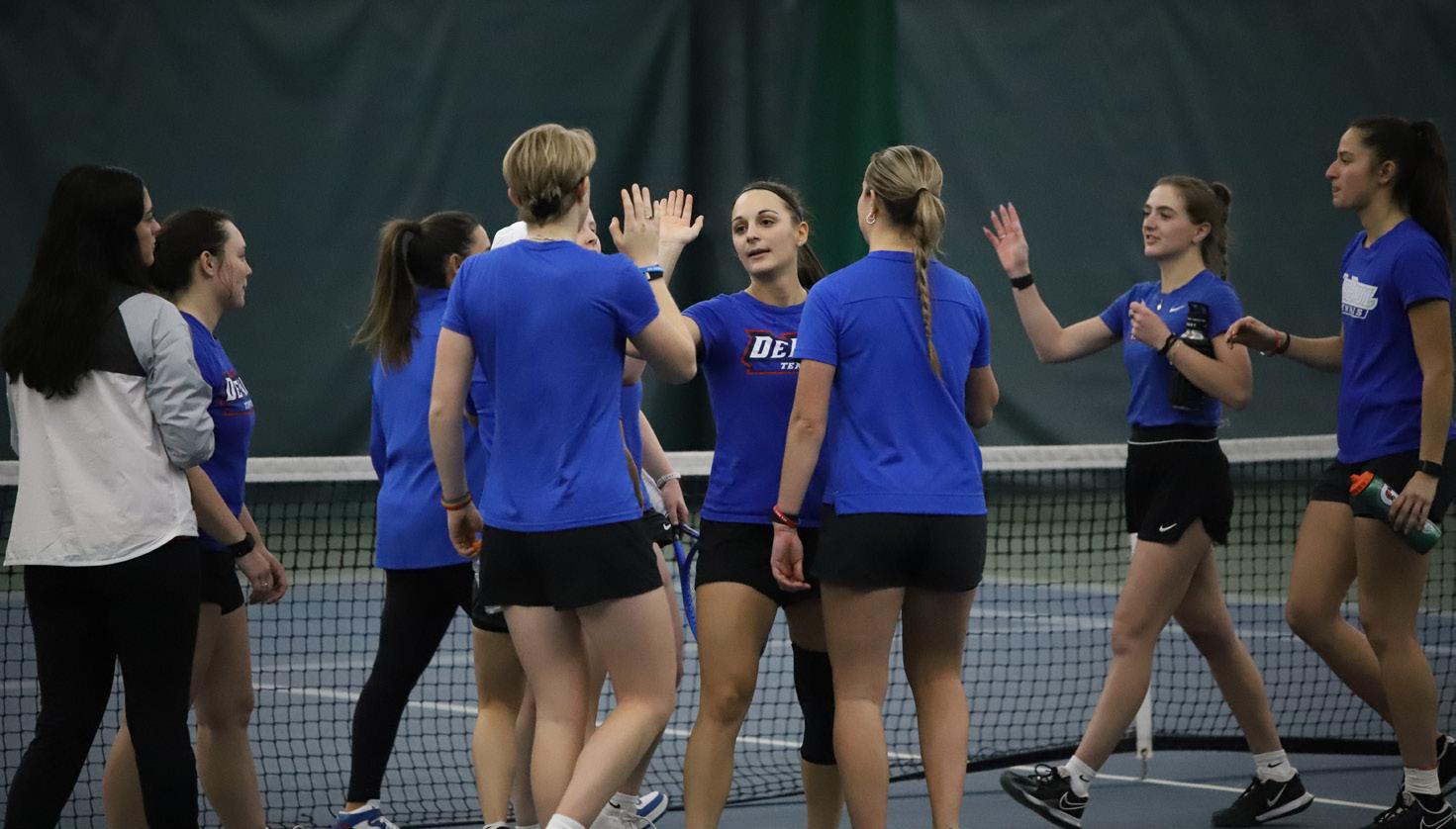
Head coach Marisa Arce put out her best combination of doubles partners to go up against Kansas State in the first part of the match.
Led by graduate student Lenka Antonijevic and sophomore Eleanor Nobbs, the Blue Demons swept each of the three doubles matches. Freshman Hannah Smith and senior partner Yuliya KIzelbasheva – along with junior Greta Carbone and graduate student Maddie Yergler –all defeated their Wildcat opponents.
“We play three courts of doubles, and whichever team wins two out of the three, that team gets one point,” Acre said. “We then play six courts of singles and each court is worth one point. So, it’s a best of seven match.”
With entire roster featuring just one U.S. born player, the Blue Demons are very culturally diverse.
Having returned five athletes from last season’s team and welcoming three new faces to the roster, Smith – the newcomer from England – has felt a true bond since joining the team while being so far away from home.
“I think that’s what’s so unique about this team, is that every single one of us is pretty different,” Smith said. “Just having
that team culture, which you don’t usually get with every team is so much more special. We are basically family, [which] is the best part.”
For the past nine seasons, prior to Arce taking over in 2019, DePaul has played in ever Big East Championship match.
Last season, the Blue Demons fell short to Xavier in the Big East title game. Since then, DePaul has kept that match as a reminder and used it in their approach for this season.
With the singles competition underway, the six courts had their own level of emotion and intensity.
On one court, you could hear a screaming match between each point won in Russian and Polish. On court two,
was German, on court three, it was Serbian. All six courts had the passion and intensity that was shown by these women, which represented what this sport meant to them.
If it wasn’t the women getting excited or trying to pick themselves up after a point, it was all six courts yelling “Let’s go DePaul”. The chatter was trying to pick each other up while everyone was focused on their own match.
“You’re not really allowed to speak in your own language during matches, you cannot talk to your opponent, but you can do some cheer,” Kizelbasheva said. “I personally use [Russian] more, because it means more for me. If I say ‘Davai’ it means more to me than ‘let’s go’ because it’s my own language, and affects me
more.”
With matches going back-and-forth for hours, Kizelbasheva was the first to get the job done, defeating her opponent and picking up another point for DePaul.
Carbone defeated her opponent in two sets, setting things up for any Blue Demon to finish the next match and walk out with a 4-0 sweep.
After losing the first set, Smith was able to stay motivated. She came back, winning two-straight sets and letting out a large amount of enthusiasm after winning the set point.
“I know this team is capable of winning the Big East,” Arce said. “The Big East is good, there is a lot of parity, and I think there are a lot of teams who could win it. I don’t think the championship is going to come down to tennis skills, it’s going to come down to our intensity, our discipline, our belief and heart. They had a really good showing today, but you know, we just got to do it every time we step on the court.”
Early in the season, the Blue Demons are 1-1 in matches played at home. Those are either at XS Tennis and Education Foundation, their outdoor courts, or at College Park Athletic Club in Deerfield, the team’s indoor facility.
DePaul will host its first Big East matchup of the season Sunday, Feb. 19, against the Butler Bulldogs. Last season, DePaul defeated Butler on three separate occasions: twice in the regular season and most recently in the first round of the Big East Tournament on April 22.
Blue Demons’ losing streak stretches to eight straight Sports
By Tom Gorski Sports EditorDePaul continues to struggle to find a way into the win column after dropping both Big East contests this week against St. John’s and Xavier. With the losses, the Blue Demons’ losing streak reaches an undignified eight games.
“These guys are resilient,” head coach Tony Stubblefield said about the team’s losing streak. “They’re older, experienced guys, so they’ll bounce back. They fought and competed again, but this one [loss against St. John’s] was on me and I told them that they gave their best effort. I gotta give a better effort for them.”
On Saturday afternoon, No. 16 Xavier overpowered DePaul to a disproportionate score of 82-68, highlighted by five Musketeers players scoring double-digit points. The Blue Demons couldn’t find a way to halt first half woes, which caused them to trail 49-27 heading into halftime.
Senior Nick Ongenda secured his first start of the season after graduate forward Yor Anei was ruled out with a hamstring injury. Ongenda saw 21 minutes of court action and finished with five points, eight rebounds and four blocks.
DePaul once again struggled to start the game, missing its first six shots, but the defense held Xavier to only five points during that stretch. After the Xavier players extended their lead to 12-4, DePaul bounced back and went on a 9-0, underlined by back-toback three-pointers from graduate guard Umoja Gibson and graduate forward Javan Johnson.
Gibson led the team in scoring with 17 points, helped by sinking five shots from beyond the arc. Gibson had three assists and rebounds each, but was forced into four turnovers by head coach Sean Miller’s manto-man defense.
DePaul didn’t have enough offensive firepower to comeback after Xavier pulled away with an 11-1 run, led by three Musketeer three-pointers.
Xavier’s lead continued to grow, and outside of Gibson and junior forward Da’Sean Nelson combining for 33 points, the team didn’t have enough offensively to come back. It also didn’t help that Johnson was held to just 10 points.
In the second half, Stubblefield’s defense held Xavier’s offense to start off 1-for-10 from the field, allowing zero three-pointers. DePaul outscored Xavier 49-33 in the second half, but couldn’t find a way to overcome its uninspiring first-half performance.
Xavier remains undefeated at home in Big East play this season as DePaul is still in search of its first conference road win. The Blue Demons fall to 9-18 on the season and 3-13 in conference.
The loss to Xavier followed up a heartbreaking 92-83 double overtime loss to St. John’s Tuesday night after blowing a 13-point second-half lead.
“I thought our guys competed for 50 minutes, and I take full responsibility for this loss,” Coach Stubblefield said. “It’s 100% on me that we weren’t able to pull this game out. I’ve got to do a better job with these guys to finish these games out.”
Ultimately, DePaul could not overcome St John’s sophomore Dylan Addae-Wusu’s 19-point second half surge, which included a game-tying three in the final moment of regulation to force overtime.
“I don’t think he’s ever seen a shot he didn’t like,” St. John’s head coach Mike Anderson said of Addae-Wusu game-tying three. “In that particular moment, he got a nice face screen and did the job of knocking
it down. I think he looked forward to having an opportunity to do that.”
DePaul started strong, taking an early 20-12 lead which was highlighted by a 9-0 run that forced four St. John’s turnovers. Nick Ongenda made his presence known early with his impact on the defensive side of the ball. Just minutes into his season debut, he recorded three blocks and two steals.
Stubblefield’s defense forced nine turnovers in the first half, and Ongenda’s defensive presence and rim protection played a role in the team’s improvements defensively.
“I thought Nick [Ongenda] did a great job,” Stubblefield said. “I wasn’t intending on him to play that many minutes, but with Yor’s [Anei] injury, we were kind of forced into that situation. I thought he did extremely well and he’ll get better and better.”
After missing most of the season with a wrist injury, Ongenda finally made his way back to the court Tuesday night. He fouled out in overtime but finished the game with 11 points, six rebounds, two steals and a career-high eight blocks.
“It definitely felt good,” Ongenda said on returning to the court. “I’ve seen them grind all year in practice and I couldn’t wait to come back and play with my brothers again. It was a good experience to go out there and fight with them, so I’m excited for the games
that are coming up.”
After heading into halftime with a 3932 lead, DePaul’s defense got off to a tough start. St. John’s started off on a 10-0 run, while the Blue Demons next score didn’t come until the 16:48 mark.
DePaul’s offense started to find its way back in sync after a couple of baskets by graduate forward Javan Johnson. He was locked in from the get go, and finished with a game-high 26 points and a career-best six three-pointers.

It was a back-and-forth matchup for a majority of the second half, but the final minute of the game became chaotic. As DePaul led 76-74 with 29 seconds left, Johnson lost the ball and was stripped by Addae-Wusu who laid it up for the tie.
As the clock was winding down, senior guard Jalen Terry made a deep three-point shot with four seconds remaining to give DePaul a three-point lead as Wintrust Arena was electric. The Storm had just 4.6 seconds left, down by three.
Stubblefield decided not to foul and instead trusted his defense. Unfortunately, Addae-Wusu broke off a screen and was wide open in the corner to nail a game-tying three with 0.4 left on the clock.
Wintrust Arena was silent in disbelief of what had just happened, until members of
the crowd screamed “why didn’t they foul?”
“We thought about it,” Stubblefield said. “We knew it was going to be a catch and shoot situation for the most part, and we didn’t want to foul a guy in the act of shooting. So, we thought about it, but decided against it. So again, that’s on me and I take full responsibility for that.”
Both teams struggled in each of the overtime periods, but St. John’s eventually came out on top. Mike Anderson’s stellar defense held the Blue Demons scoreless during the second overtime, while holding DePaul’s offense to 1-14 shooting between the two overtime periods.
DePaul was outscored 13-4 between the two overtime periods, and St. John’s reached the free throw line 10 times, making eight of them. After Ongenda and graduate guard Umoja Gibson fouled out, there was not enough firepower on offense for the Blue Demons to keep up with the Storm.
“Every loss hurts,” Johnson said after the game. “This one hurts real bad because we had the game won, but we gotta keep going.”
DePaul (9-18, 3-13) returns to Chicago for a 7:30 p.m. game against Butler (13-14, 5-11) on Wednesday at Wintrust Arena. The game will be broadcast on FS1.
